














Elisa Claassen For the Tribune
LYNDEN — You don't have much time but you want color and you want it fast.
Putting together colorful and colorfilled pots and containers is a great weekend activity done alone or with friends. David Vos is a great expert to consult with.
In 1938, James Vander Giessen opened his first greenhouse to the public in his backyard on the edge of Lynden. That business still exists and now Vos and his father, Alvin, own the business.
Preparing the soil
‘I think too many people cheap out on potting soil because it’s something they don’t see,” Vos said. “Choosing a good quality, well-drained potting mix is really key to the success of your plants.”
Vos said he personally prefers a mix that has a high amount of peat moss and a second option would be Coco coir, made from coconut husks.
“Coco coir is a decent option as well but can be a bit more finicky for people who are used to using traditional potting soil,” Vos said. “It dries out differently than peat moss.”
See Spring Plants on next page

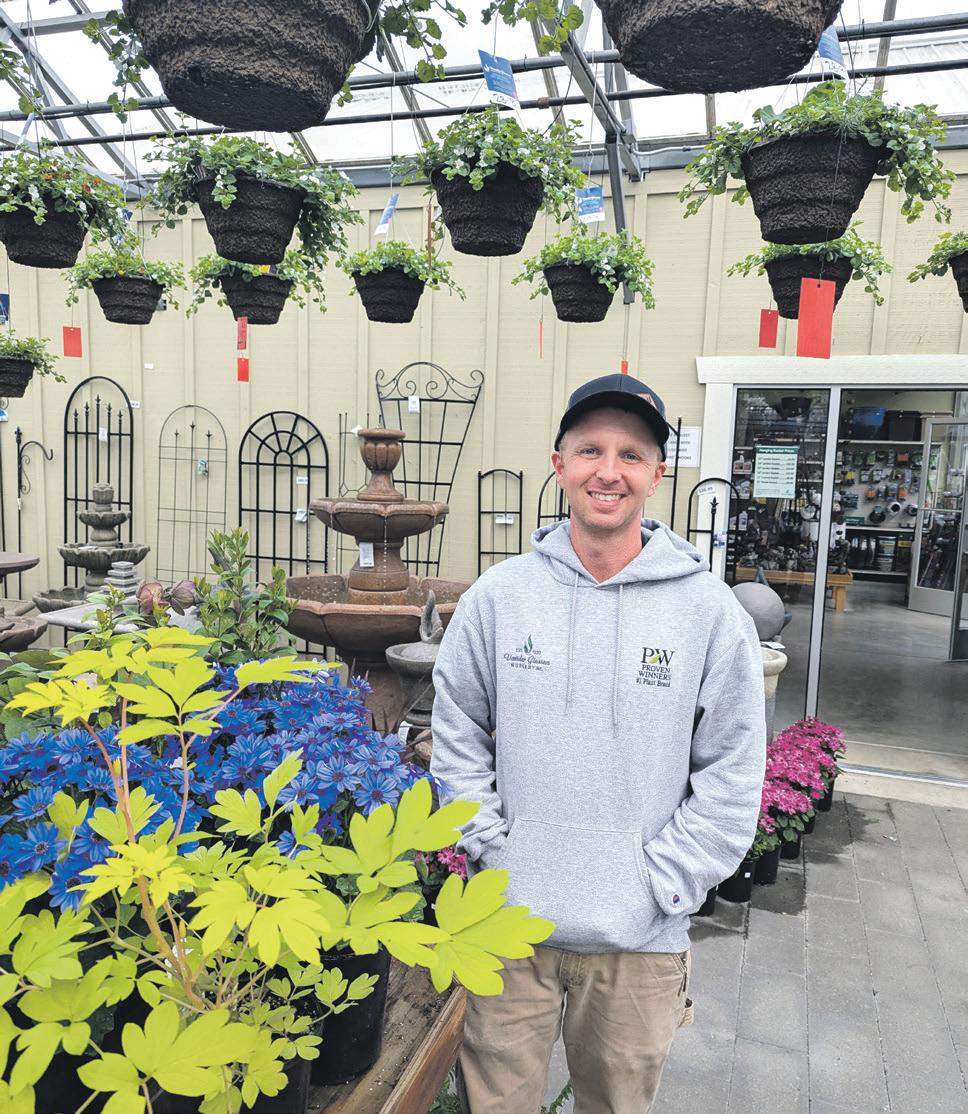
What’s wrong with lesser expensive potting mixes? Vos said they use a lot of compost when they tend to compact and not allow for proper drainage in a pot or a hanging basket. Without a bit of air, the plants can start to suffer as they grow.
“The peat moss potting mix really helps to stay aerated,” he said. Roots need air.
Picking a pot or container and location
While the nursery uses pulp pots for the hanging baskets, it depends on a papier-mâché-type of material made from recycled newsprint. They allow for drainage and insulation versus a standard plastic pot. Depending on the location, Vos likes using the newer more durable plastic pots available for patios.
“Today’s plastics are pretty nice looking and can mimic ceramics or even metal or wood in appearance,” he said.
In contrast to what they mimic, they are lightweight and much easier to move around.
“If you’re growing anything in containers that are permanent, you might need to move them indoors during a bad winter storm,” he said. “It’s nice to have moveable pots.”
Vander Giessen does carry a series of the plastic pots referenced ranging from small four-inch pots to the ones with a 20-inch diameter. The new looks can be used to achieve a more contemporary look as well such as flanking a garage door, Vos said.
Taller pots can be placed along tall walls. He also doesn’t discount the use of ceramics and terracotta which are beautiful and classic.
A reminder for anyone using the latter options: don’t leave them out year round as they can freeze and crack.
What and when to plant
While his commercial nursery starts planting flowering baskets in February, it is done in the greenhouses. Vos recommends waiting to plant the outdoor pots until spring
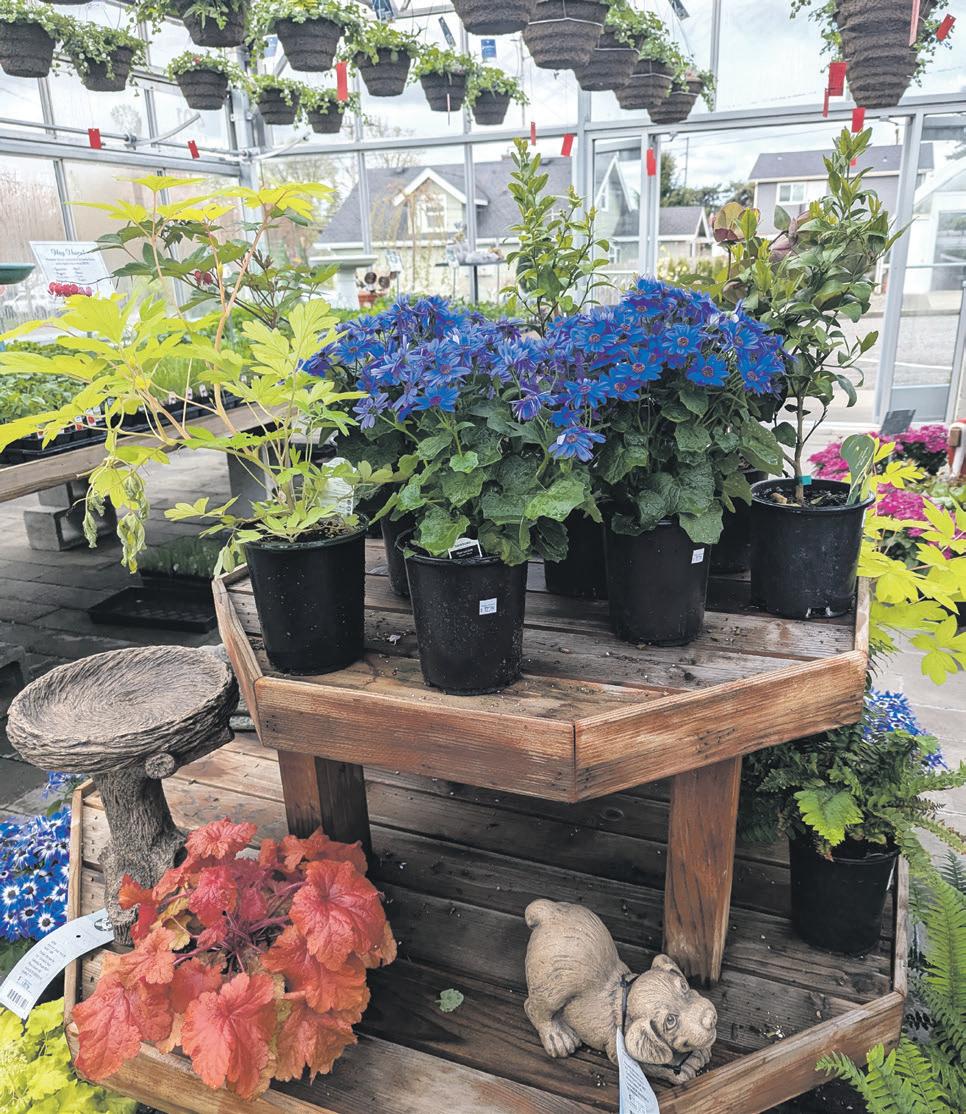
near the end of April or first part of May to avoid a hard frost.
“Unless you are giving your plants some protection,” he said. “More people have little greenhouses since the popularity of the Pandemic.”
Vos and his team use a well-established formula for planting pots or hanging baskets: thrillers, fillers and spillers. Think of selecting between items that literally trail or spill over the side, such as petunias, ivy or verbenas.
Fillers are things that fill up space between the other two categories. They often are upright but not as tall as the thrillers. One example is Coral Bells (Heucheras) with its attractive foliage and bright pink flowers. It’s a great plant for shade (think of where the containers will sit, whether in the sun or shade).
Other options are marigolds, lobelias and salvia. Pick well and when the flower is done, the foliage will still stay through the summer and into the fall – extending the season.
The third category is the thriller: it is the tallest, most eye-catching flower to sit in the middle. Think of a cypress or even a hellebore.
Vos spoke of an accidental planting of mixing vegetables with flowers, a cherry tomato seed fell into the potting mixture for a flower basket being planted.
Surprisingly, the customer enjoyed the added surprise.
For anyone who intentionally wants to do it, one he suggested is using rainbow chard which adds both something edible and colorful at the same time.
“You can be bold and experiment,” Vos said. “Perennials are also great additions to containers including as fillers, something a lot of people don’t think of. You can plant them for a season in the pot and then transplant them into your flower beds later to continue.”
Vos reminded gardeners that some of the newer flower varieties are self-cleaning and don’t require deadheading.
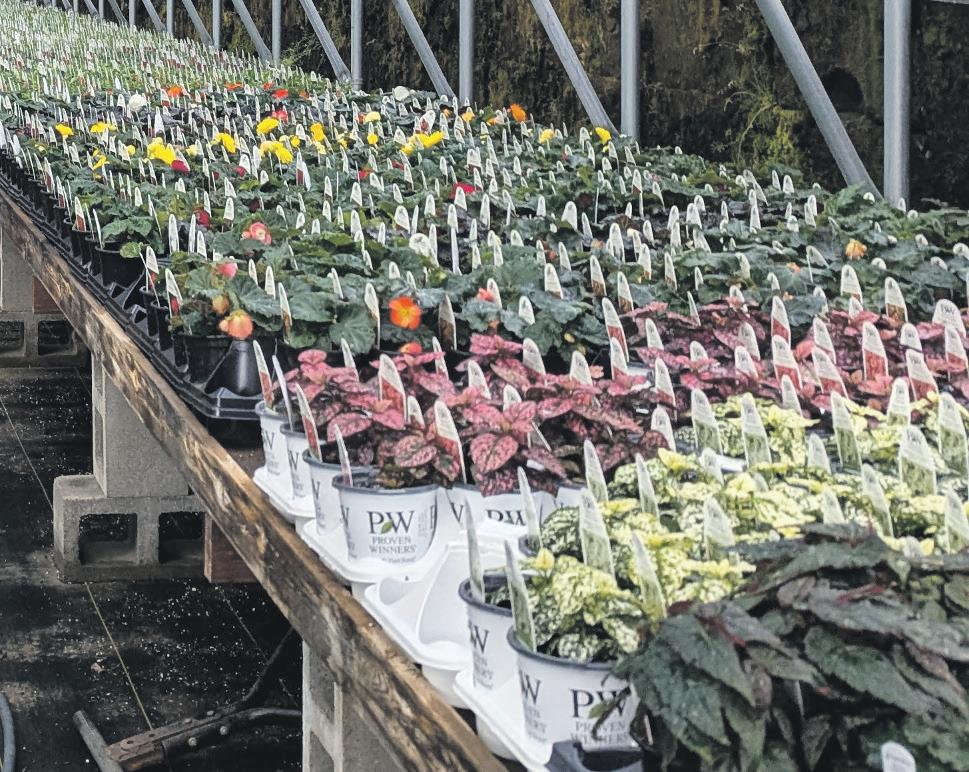
In 1938, David Vos and his team use a wellestablished formula for planting pots or hanging baskets: thrillers, fillers and spillers. Vos is pictured at left at Vander Giessen Nursery, at 401 E Grover St, Lynden. (Elisa Claassen for the Tribune)
Feeding can’t be ignored or overlooked.
Consider using both slow release fertilizer and a watersoluble fertilizer. The water soluble will reach where it’s harder to feed later on.
Regular feeding … his favorite is Jack’s Classic Fertilizer, the original blue powder fertilizer that mixes into water and has been around for commercial growers for decades. It preceded the popular home gardener’s Miracle-Gro. Unlike plants in the ground that can reach for food through the soil, ones in containers can deplete the food quicker and need help. For anyone who wants to buy Jack’s for themselves, Vander Giessen will sell it to shoppers.
While nurseries may have a wide range of plant food options, Vos said the all-purpose blend can be used for everything from flowering containers to vegetables too.
Many edibles also do start with a blossom or flower that turns into fruit, so they like to alternate the all-purpose formula with a blossom booster blend which is 10/30/20. The higher the middle number encourages both flower production and strong rooting. While many realize getting more blooms know that there are more flowers, it can also produce more fruits.
“Tomatoes start as a flower so you get more flowers on your plants, you get more fruit,” he said.
Jack’s has a slow-release formula, ClassiCote, that can feed for three or four months and is a good choice for perennials and shrubs. ClassiCote is not enough for annuals so he suggests mixing slow-release formula into the potting soil at the start and supplementing with water soluble once weekly.
Vander Giessen, which is open year-round, has an opportunity for special orders early in the season for baskets and certainly sells pots and plant material and potting mixes to plant in.
They also have a special event, which they post about online, Tomato Days. Vos’s team is happy to advise any gardeners of how they can put together their own containers.

By Whitney Tjoelker For the Tribune
Have you ever come across the saying, “Find the worst house on the best street?”
While this might seem like a daunting task, a Homestyle Renovation Loan from Peoples Bank could make it easier than you imagine.
Renovation loans can be used to buy fixer-uppers or any home that you wish to upgrade or modify. Instead of taking one loan for the home purchase and another for potential renovations, a renovation loan combines both into a single package. This means the total loan amount covers both the property acquisition and any planned improvements.
With renovation loans, homebuyers who see the potential in a property can include money for improvements within their purchase financing. This could range from something as straightforward as updating finishes to undertaking major projects like a roof replacement. In competitive housing markets, this flexibility allows buyers to broaden their search to include homes that may need a little
extra care. You can allocate your resources toward what truly matters to you, rather than being constrained by the property’s current state.
Renovation loans are simple and adaptable as they enable you to use the money in ways that suit your vision. Whether it’s upgrading the kitchen, adding a swimming pool, constructing an on-site ADU, replacing a septic system or revamping your garage, the possibilities range from fun to functional.
The Homestyle Renovation Loan from Peoples Bank provides a lower interest rate than a traditional Home Equity Line of Credit and requires a smaller down payment than a standard construction loan. If this sounds like the right option for you, I encourage you to reach out to explore the details. Finding your dream home requires dedication, determination, and sometimes a stroke of luck.
Let Peoples Bank handle the rest.
Equal Housing Lender. Member FDIC.
-- Whitney Tjoelker is senior mortgage loan officer for People Bank.


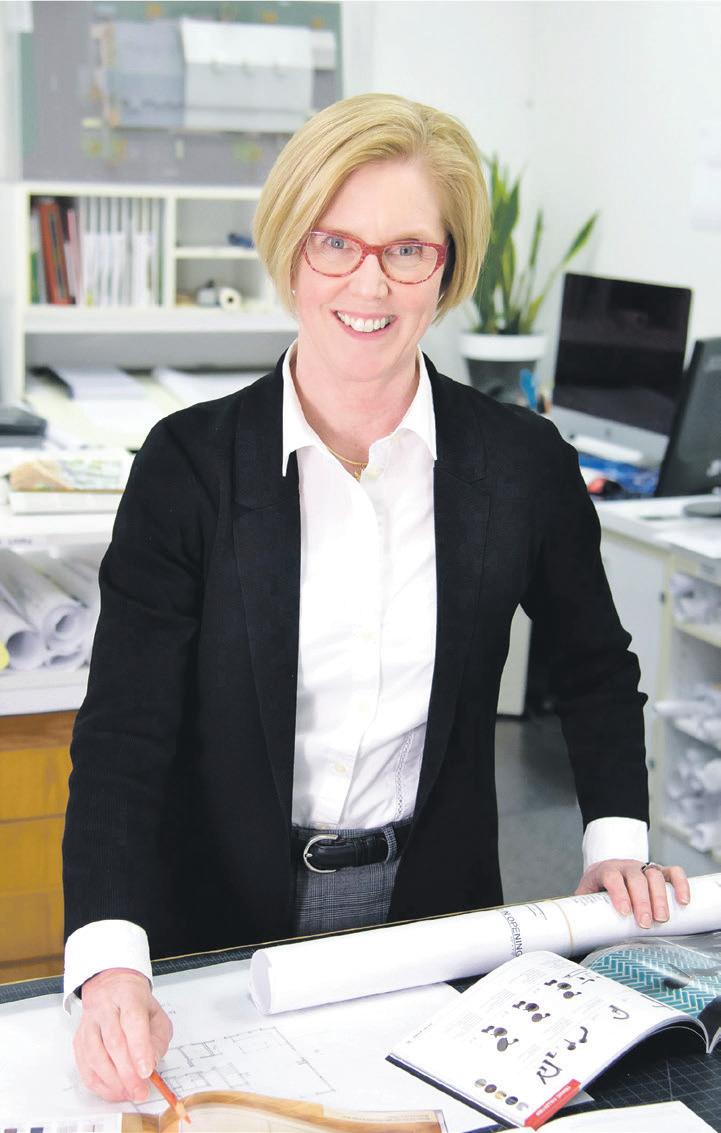
By Susie Landsem For the Tribune
We made it to spring. It’s time to play in the dirt, mow the lawns, then spend time on the patio. It’s also time to make sure your deck, tools and you are in good shape. Start with the patio. Clear any debris that has built up over the winter. Wash the floor and hand railings to prevent slipping. Watch out for splinters on the wood on the railings and cracks in the sidewalks. Try to repair those quickly and keep the deck safe.
Did you winterize your barbecue before putting it away for the winter? Avoid a fire by making sure it’s clean before the first burgers flipping the season’s first burgers. Remove the grills and flavor bars and scrub them with a degreaser and a stiff brush. Don’t forget to clean the inside of the barbecue. Wash the outside soap and water.
Time to get your hands dirty? Minimize stress and strain when gardening with raised garden beds. They are more acces-
sible and easier to plant, weed, and water. There are easy-to-build kits for the do-ityourselfers. Some beds can be disassembled and stored away for next year.
Clean and sharp tools are the safest to use in the garden. It may be time to replace them. There are a variety of tools with different sizes and handle types designed to make gardening easier for you.
Find the perfect tool to suit your needs, ensuring comfort and reducing strain as you work in the garden.
The sunshine feels delightful. Enjoy the heat and shield yourself from the sun’s harmful rays. It is vital to wear sunscreen that is rated 30 SPF or above.
protection. Some clothing brands have SPF-rated shirts, shorts, and pants to de fend against harmful rays. Be comfortable and safe.
outdoor spaces, including front and back doors. Good lighting is essential for safety. Use solar yard lights to help with the gar den area.
Be sure to check the light bulbs from last season. Clear pathways should be free from tools, pots, overgrown plants, and toys. Check gates and railings - they should be sturdy and in good shape.
Pick up hoses and store them on a wall hanger or a storage box.
Focus on entries and stairs. They should have sturdy hand railings, preferably on both sides. Stairs need good lighting to avoid tripping or missing a step.
Make sure there is plenty of lighting near the barbecue. Keep stair treads clean and consider adding slip-free strips for


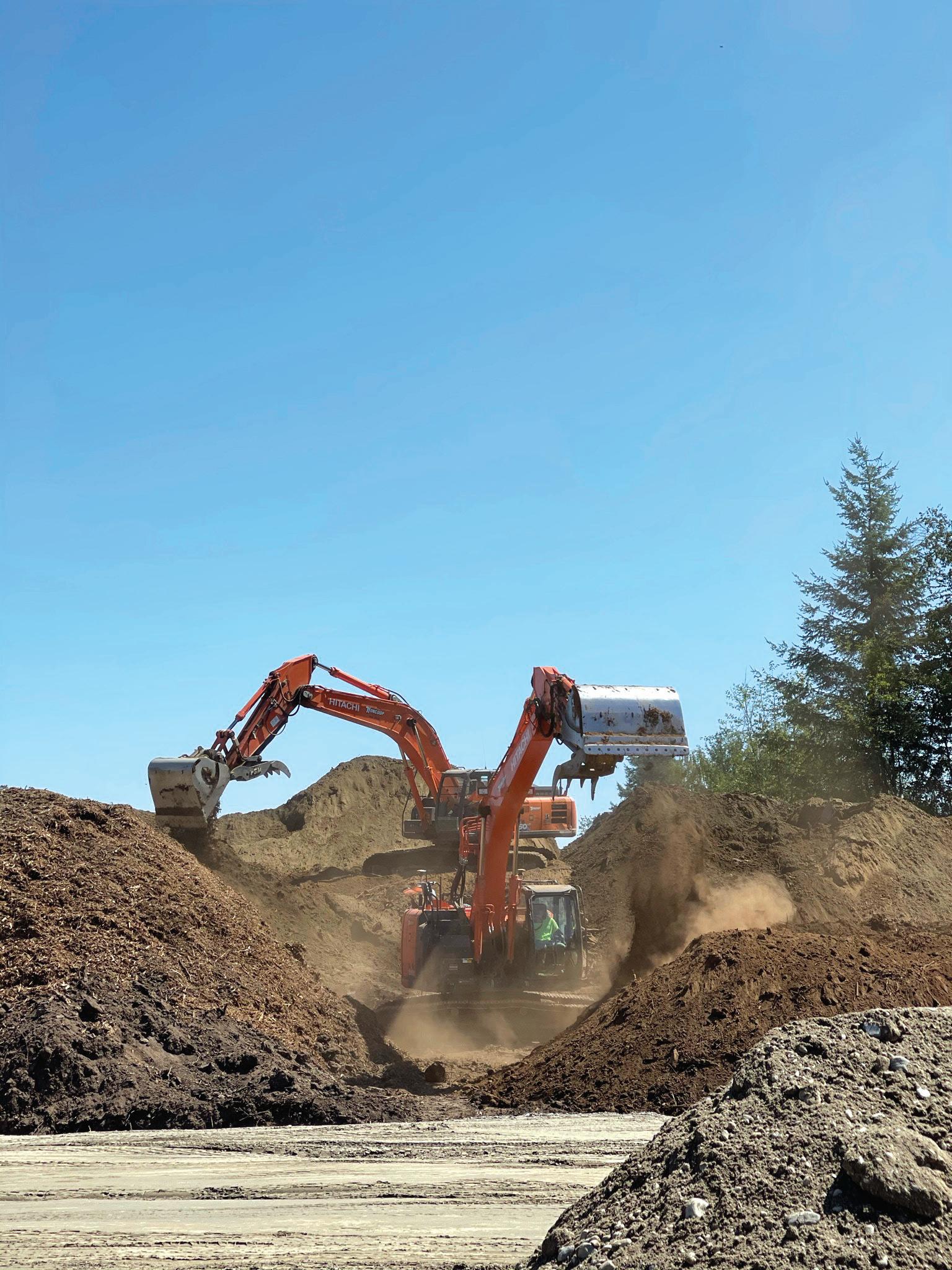

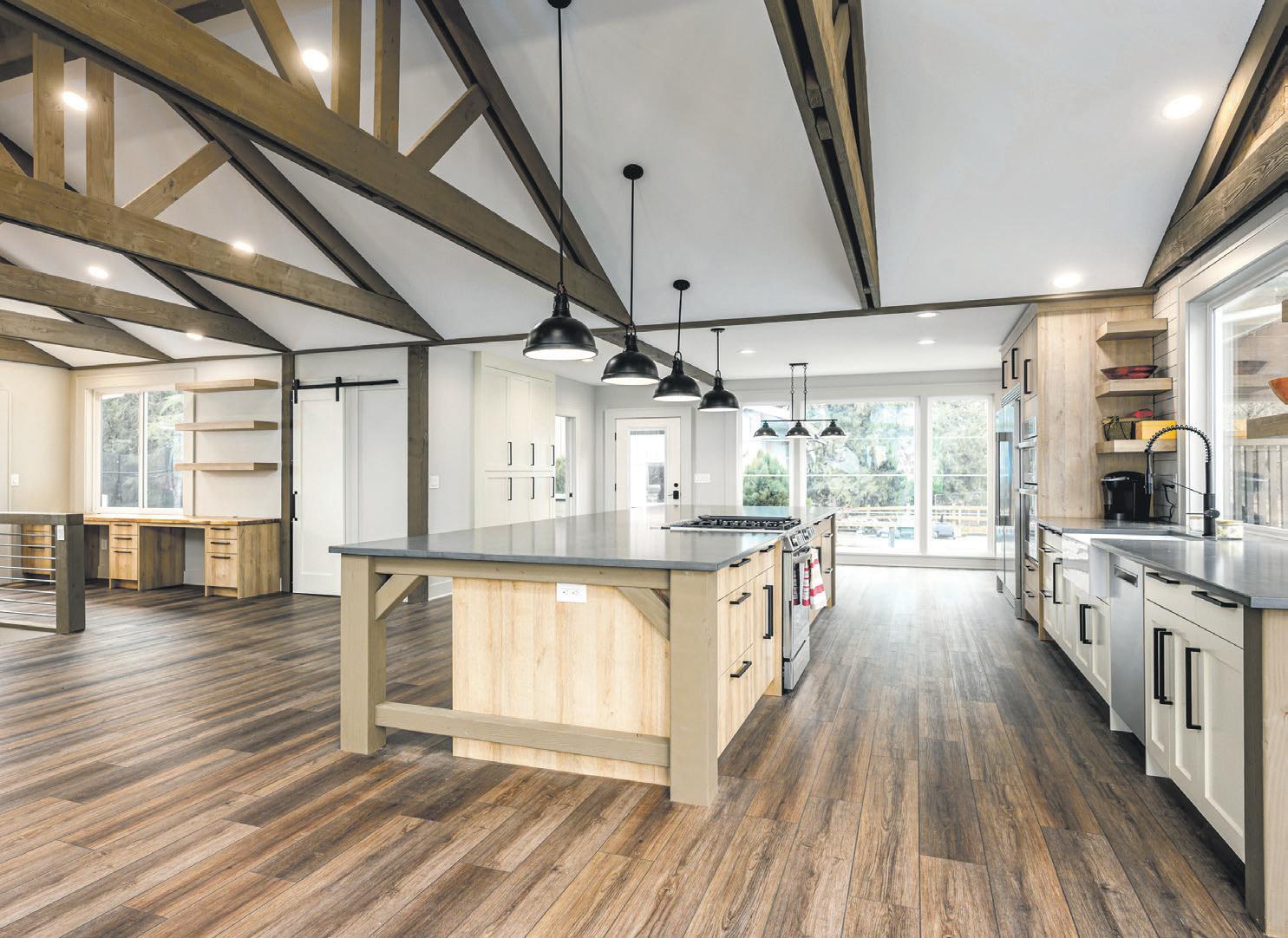
By Racquel Muncy Staff Reporter
LYNDEN — A home is more than a place to rest your head at night. A kitchen is for more than a meal. These spaces help grow and strengthen relationships. That’s how Emily Laverman views her home.
Emily and David Laverman moved into their 1920s home in 2021. Emily wasn’t a fan, but Dave really wanted to move out of town and have more space, which the property off Berthusen Road provided, so he promised they could do renovations in the near future.
“It needed work,” Emily said. “There were walls everywhere.”
The Laverman home was filled with walls that created small spaces: a kitchen, a dining area, a living room, a laundry room, a small office space.
Right away, Emily started thinking up ways to make the space more livable. It needed to be open, with lots of windows both to bring in light and so she could al-
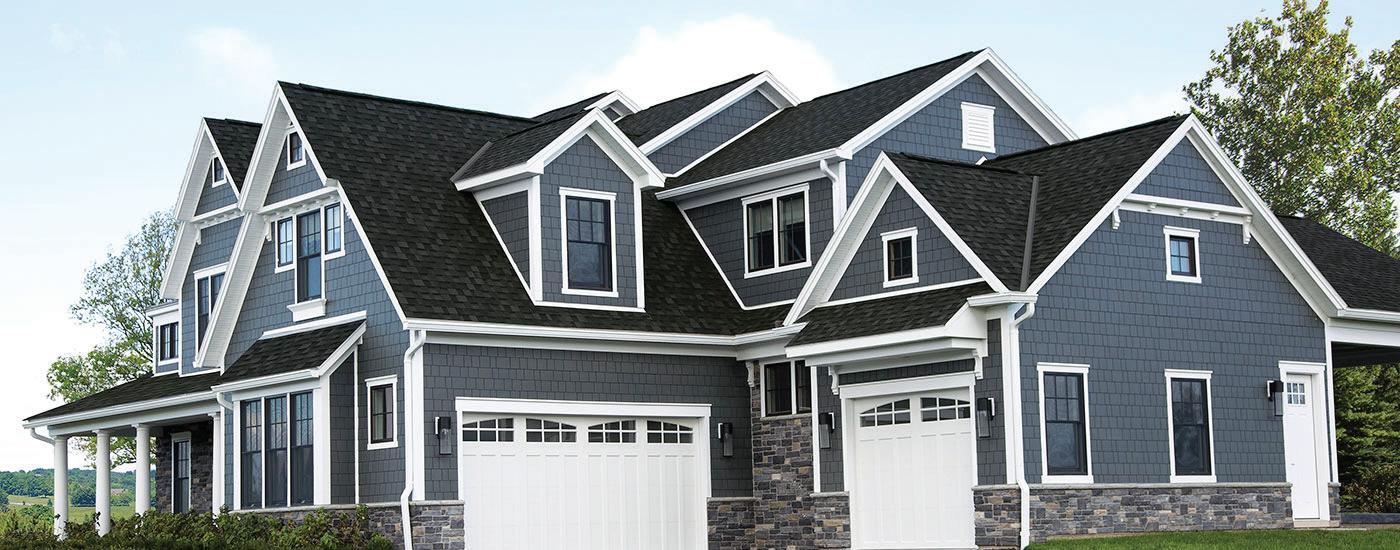

ways keep an eye on her four children. She liked the modern farmhouse look.
Emily said it was important to do the renovations early into owning the home.
“We wanted to be able to enjoy the space with our kids,” she said.
It didn’t take the couple long to find Craig Telgenhoff, president, designer and project manager for CLT Design/Build.
Telgenhoff has been in the home design-build arena in some fashion since he was 13. That experience is shown in his projects. Emily said she did not have to give much detail on what she wanted and Telgenhoff was able to run with it.
“Craig had tons of ideas,” she said.
She said her must-haves were an open space with natural lighting in the modern farmhouse style. Emily looks forward to hosting friends and family and said the open space is a must have for proper hospitality.
“Hospitality is a little bit of a lost art,”
See Lavermans on 11
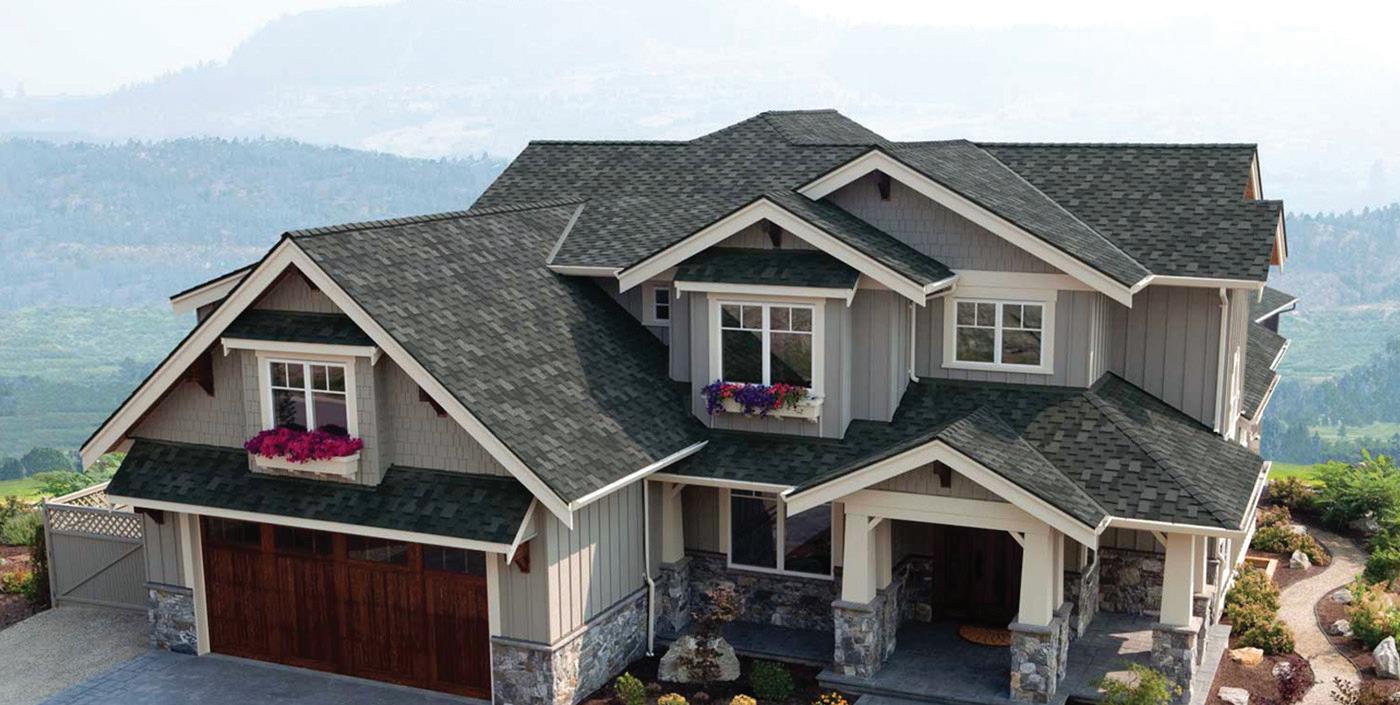
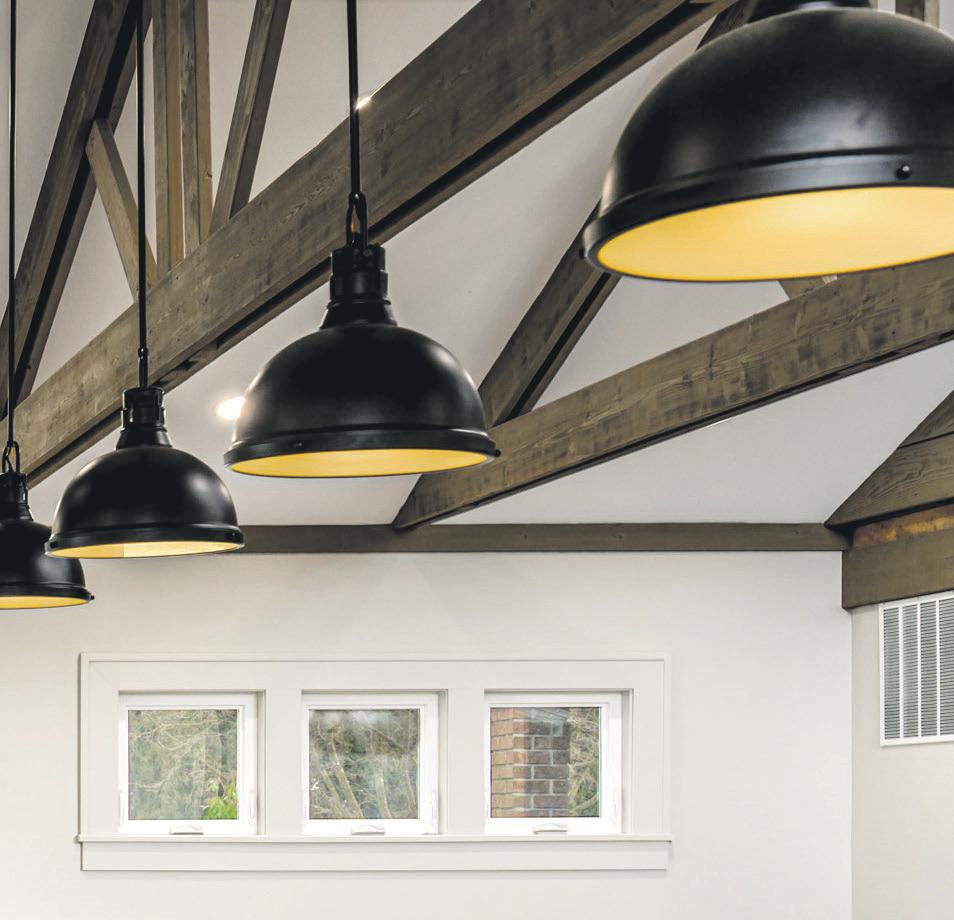





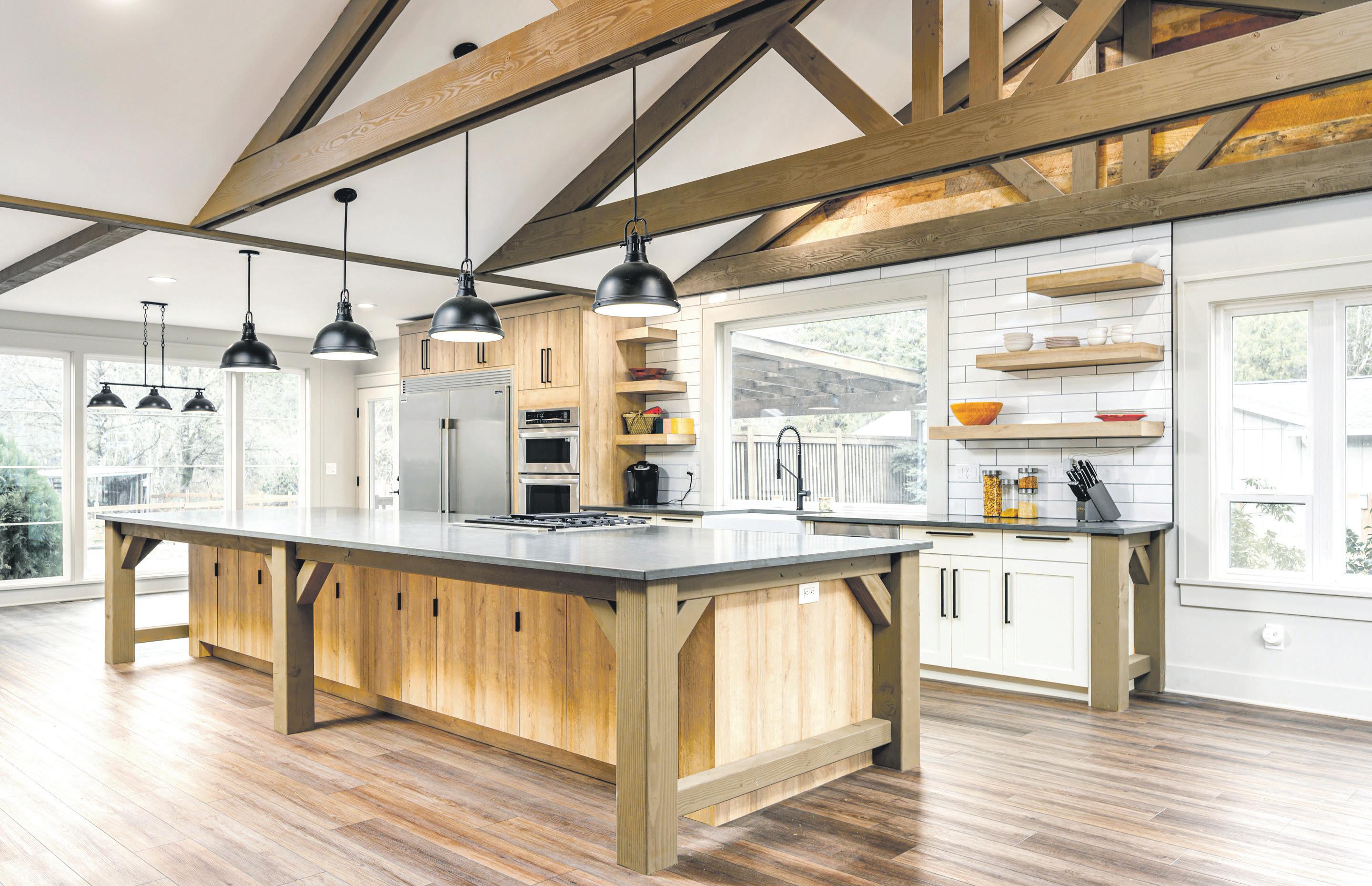
Owner of CLT Design/Build, Craig Telgenhoff had the idea for a 16-foot island countertop in the kitchen, pictured above, to create a space for the family to gather around while Emily cooks. Pictured on the next page are various glimpses of the completed full remodel of the family's Lynden home. (Photo courtesy CLT Design/Build)
she said.
The hope is the space will become a place where her children want to bring their friends over, allowing Emily to continue to have a strong relationship with her children as they get older.
She also wanted windows in the laundry room, so as to not have it feel like a dark, cramped space.
Dave said he liked the idea of a vaulted ceiling and once Telgenhoff brought the idea of exposed wood truss beams to top off the look, he was hooked.
Telgenhoff also had the idea for a 16foot quartz island countertop that extends
through most of the kitchen and has plenty of storage underneath.
While 7-year-old Gemma enjoys the open space the most, she said the island countertop is a close second because she likes helping her mom cook. She’s recently begun making her own eggs and mac n cheese also. Emily said the countertop was cramped before, making it more difficult for young Gemma to help. The new space allows for this time together, strengthening their relationship.
Prior to the renovated kitchen, Emily said she did not particularly enjoy cooking, but now she doesn’t mind it.
“How can you not love cooking with all that counter space,” she said.
It’s also important for the Lavermans to eat dinner together whenever possible and mornings are spent at the table eating breakfast and doing devotions. The new open dining area allows them all to sit comfortably.
“The space really lends itself nicely to that,” she said of sitting down and eating meals together.
Emily said a major requirement for the renovation was for it to be timeless. They did not want to have to go through another kitchen renovation in 10 or 20 years.
She said she was grateful for Telgenhoff’s eye for design, as all of the options can get overwhelming without a guide.
“For us that was well worth it,” Emily said of hiring CLT Design/Build rather than try to do the renovation themselves.
The renovation also came with new appliances, but the couple said one change they made sure didn’t happen was losing their large, double door fridge, freezer.
Dave said originally Telgenhoff had designed the kitchen without the fridge, but he redesigned the area to fit the fridge.
See Lavermans on 12-13
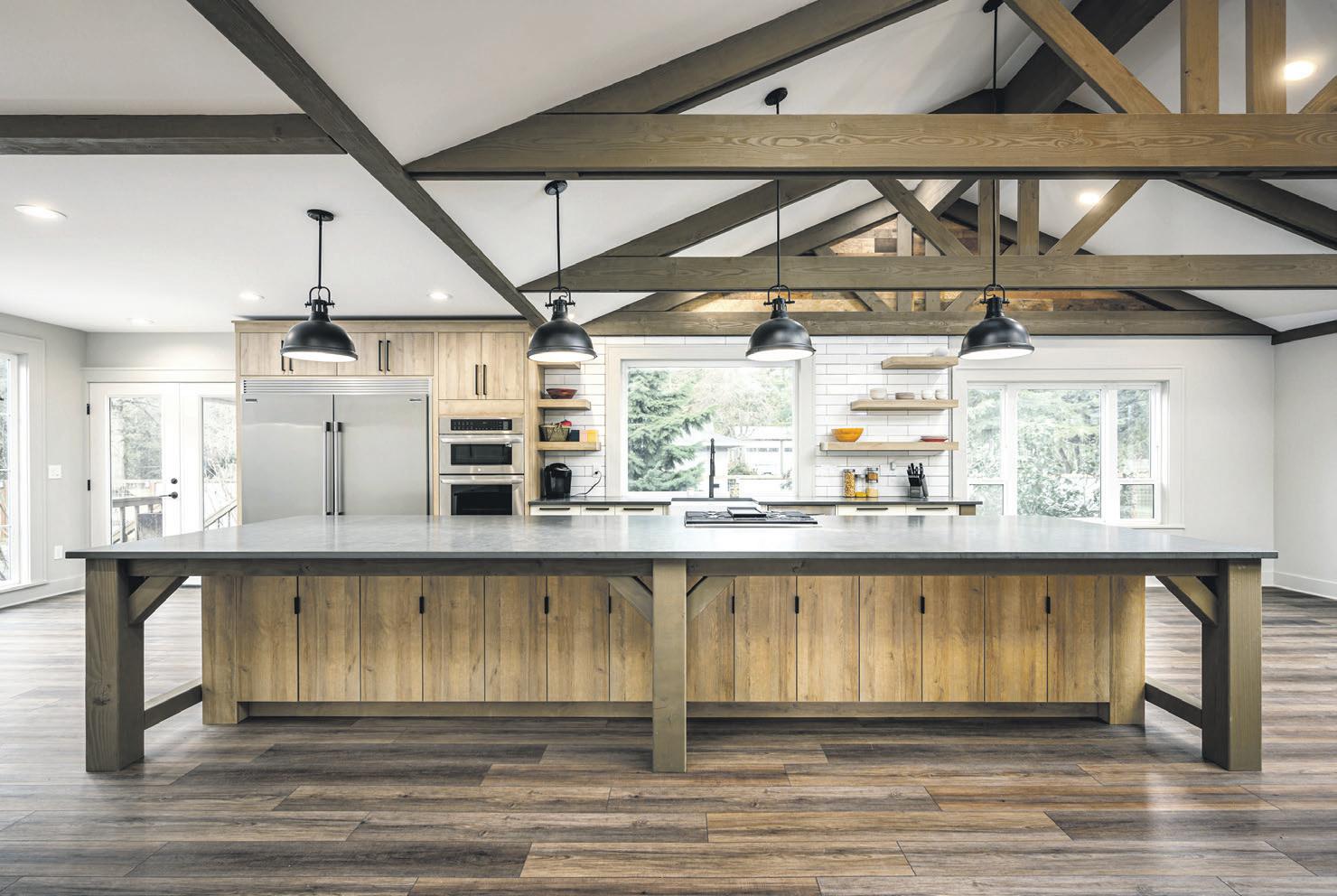
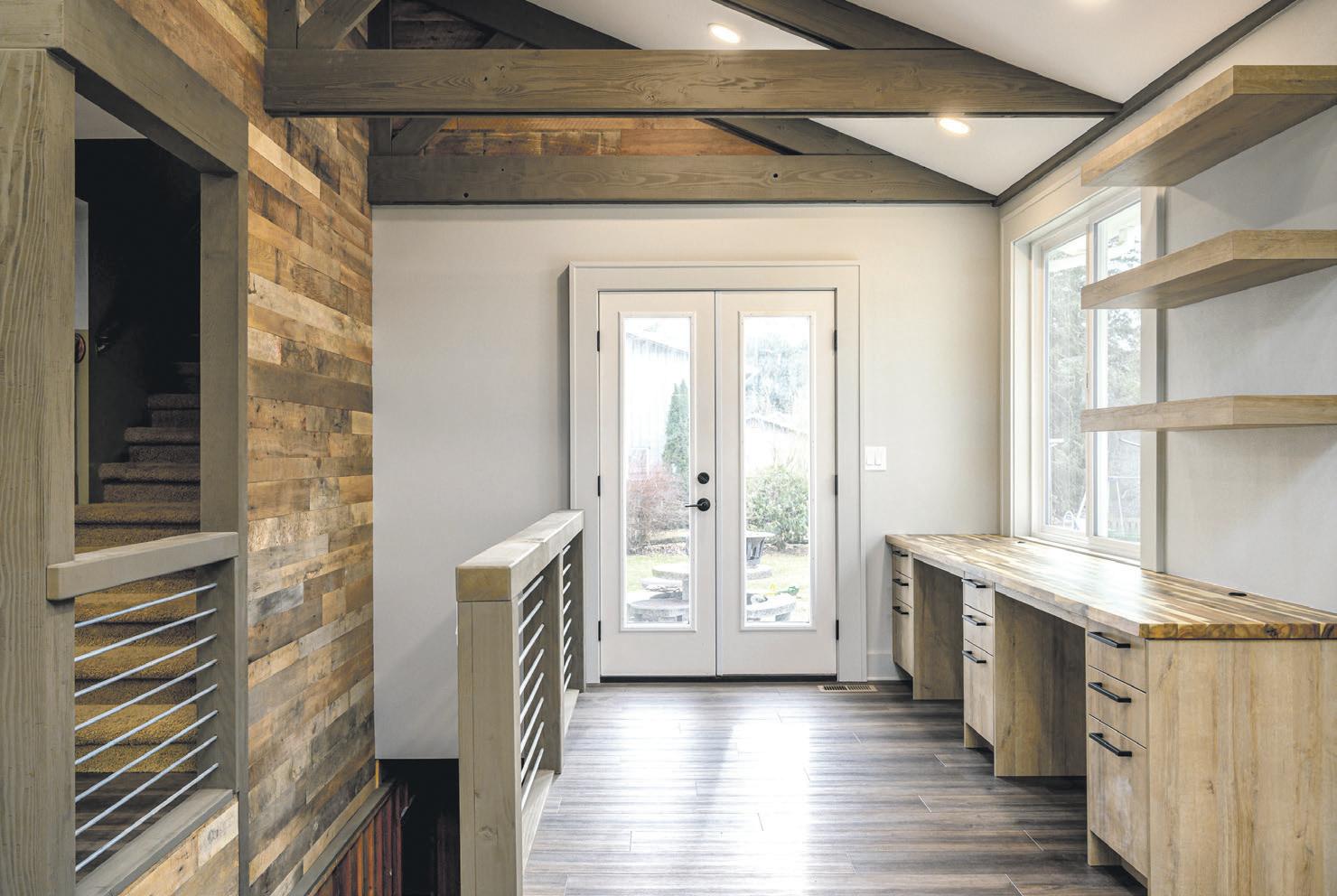
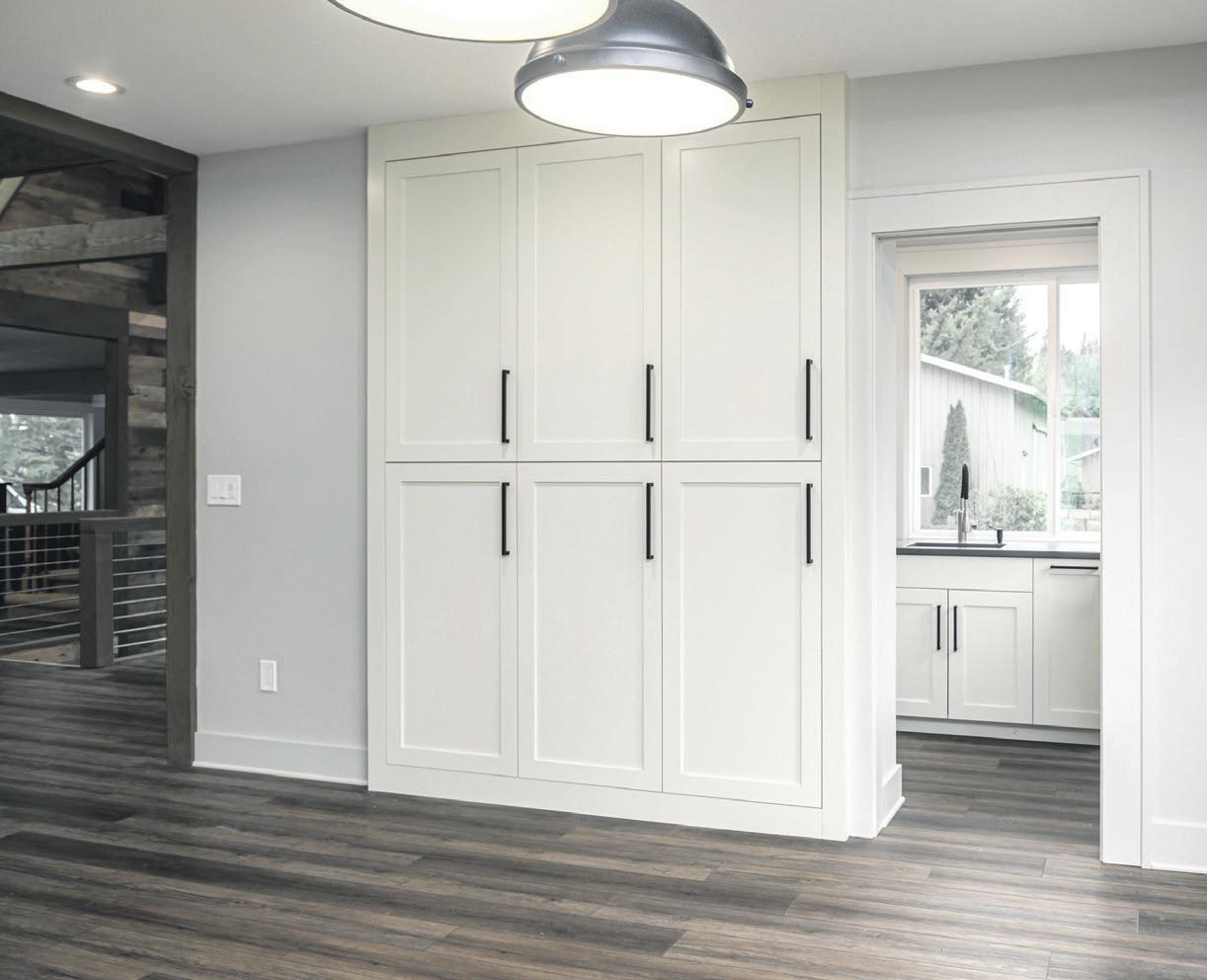
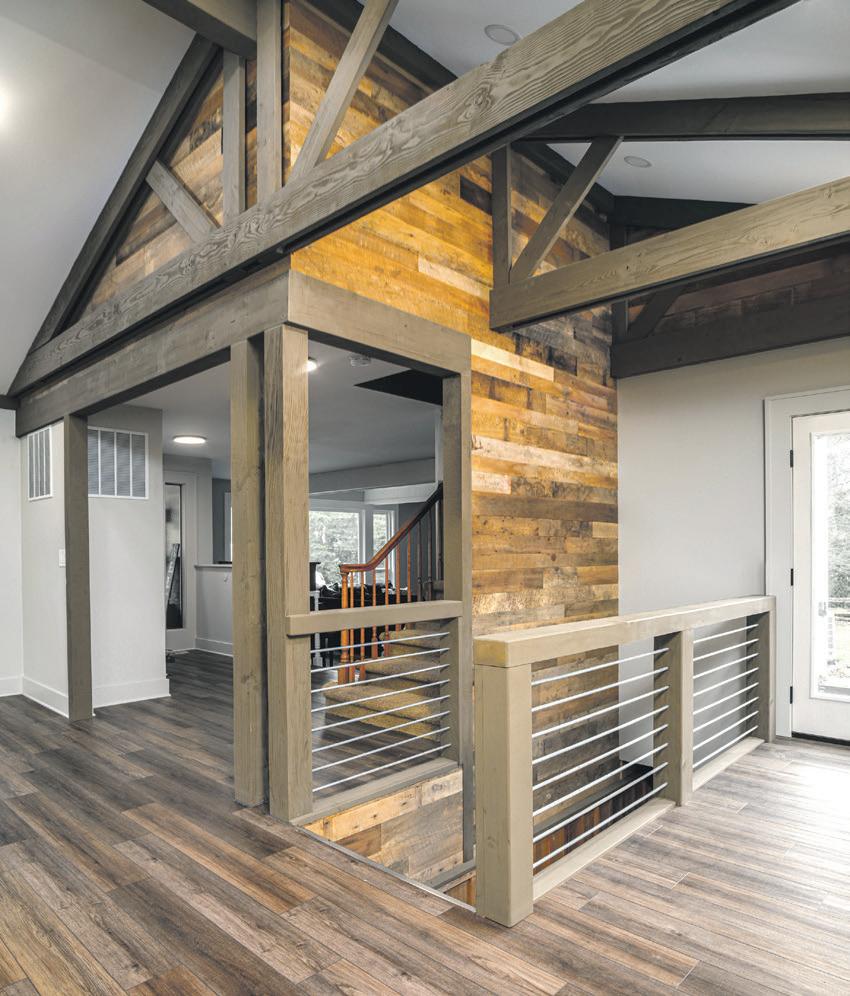
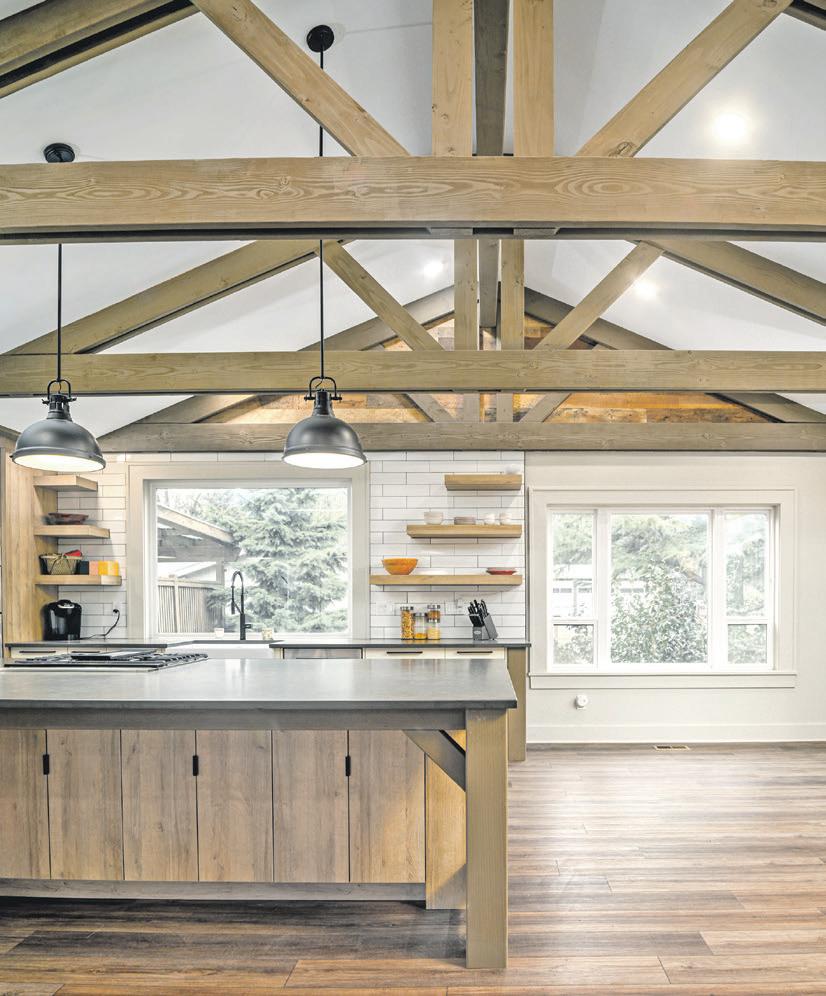

By summer 2022, the renovation had begun. Dave said the project took about six months from start to finish.
“When you’re in it, it feels long,” Emily said of the six months. “Looking back I think they worked exceptionally fast.”
During the process the couple said Telgenhoff was very communicative and spent time making sure everything would end up as they imagined.
“He was out here measuring a lot,” Emily said. “He was very thorough.”
The crews coming to do the work were very patient with the young boys full of questions and they worked hard to get the family back in the full use of their home.
Dave said when all the work was finished, even once some after thoughts were factored in such as the trusses, the original estimates were pretty spot on. He said Telgenhoff had given them a low, medium and high estimate. After all was said and done Dave said the high estimate was “spot on”.
Emily said Telgenhoff did an amazing job making sure the renovated space fit in with the rest of the house, better setting up the family for the future.
“He was thinking about that,” she said. “He has an eye for this.”
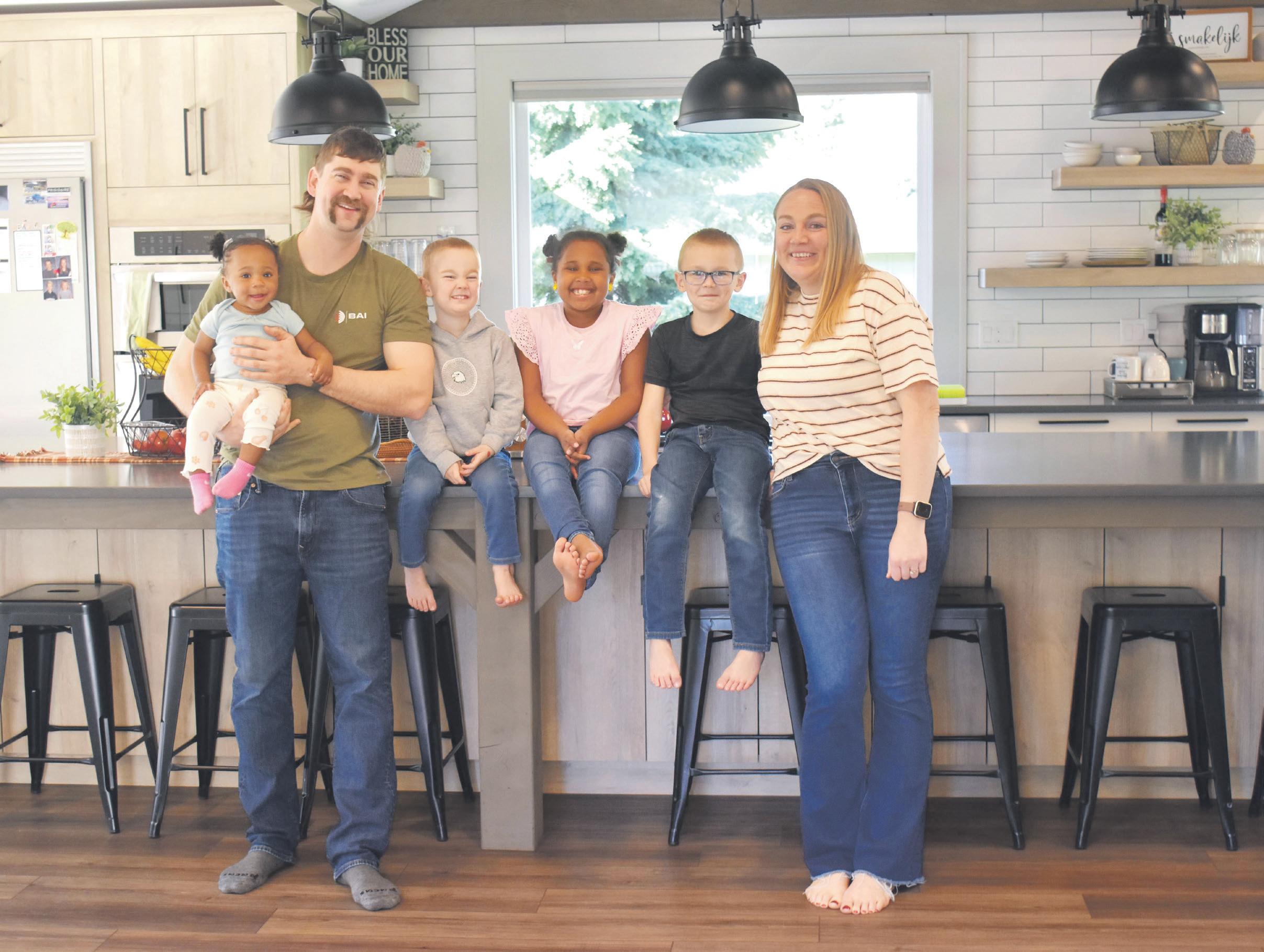
-- Contact Racquel Muncy at racquel@lyndentribune.com The remodel took about six months to complete, from summer 2022 through early 2023. Now the family is able to enjoy the space. Pictured with Emily and David Laverman are their children, from left, 1-year-old Zoe, 3-year-old Kampbell, 7-year-old Gemma and 7-year-old Niel. (Photo above by Racquel Muncy/Lynden Tribune. Photos on opposite page courtesy CLT Design/Build)





By Jaymie Lint For the Tribune
LYNDEN — When you think of planting and growing zucchinis, are you thrilled and eager to start harvesting, cooking and baking with them?
Or do you feel a sense of dread, knowing that if you don’t carefully monitor each step, you could suddenly find yourself dealing with a zucchini explosion — or worse, plants that appear to be dying on the vine?
Many gardeners are fans of zucchini, and why wouldn’t they be? Zucchinis are nutritious and almost guaranteed to thrive in the garden.
Once planted, they seem to grow and grow ... and grow some more.
They are a good source of vitamins A and C, potassium and folate, and they are also rich in antioxidants. Low in calories and high in water content, they provide a refreshing and hydrating option during the heat of summer.
But what happens when this dark green fruit (or is it a vegetable?) takes over your cherished seasonal garden — either overproducing or inexplicably rotting on the vine — leaving you with a complicated relationship you’d rather avoid?
You can probably relate to this scene: You casually walk past your garden when you notice a few long, decent-sized zucchinis ready to pick.
The next day, what looked like maybe two or three have suddenly morphed into six or seven — and they’ve inexplicably doubled in size.
Panic sets in as you begin to mentally list friends, family and acquaintances who might be willing to take a few off your hands. Meanwhile, others rush out to check their




zucchini crop only to find small, lethargiclooking vegetables, mushy on the ends and clearly failing to thrive.
So, what’s the deal with zucchini? Where did they come from? Why are they so prolific yet so temperamental?
What can a resourceful gardener do to strike a happy balance and fully enjoy this abundant vegetable?
Or is it a fruit?
Zucchini: A brief history
For starters, zucchini is botanically classified as a fruit. Not only does it have and come from seeds, but it also grows on the flowering part of the zucchini plant.
A vegetable is any other part of the plant that is edible such as stems, roots and leaves.
But for cooking and eating purposes, the zucchini is treated as a vegetable and is usually served in hot and savory dishes. Zucchini blossoms are quite pretty — and they’re edible too.
Both male and female zucchini flowers can be eaten raw or cooked, and have a delicate, mild flavor.
A type of squash, zucchini’s ancestors are thought to have originated in the Americas.
However, the variety we recognize today is believed to have been cultivated in Italy in the late 19th century, where it quickly became a staple in Italian cuisine.
From there, zucchini spread across Europe and eventually made its way to the United States. The name zucchini comes from zucca, the Italian word for squash, or zucchino, meaning small squash.
In France, it is known as courgette. Zucchini is believed to have arrived in North America in the 1920s when it was brought
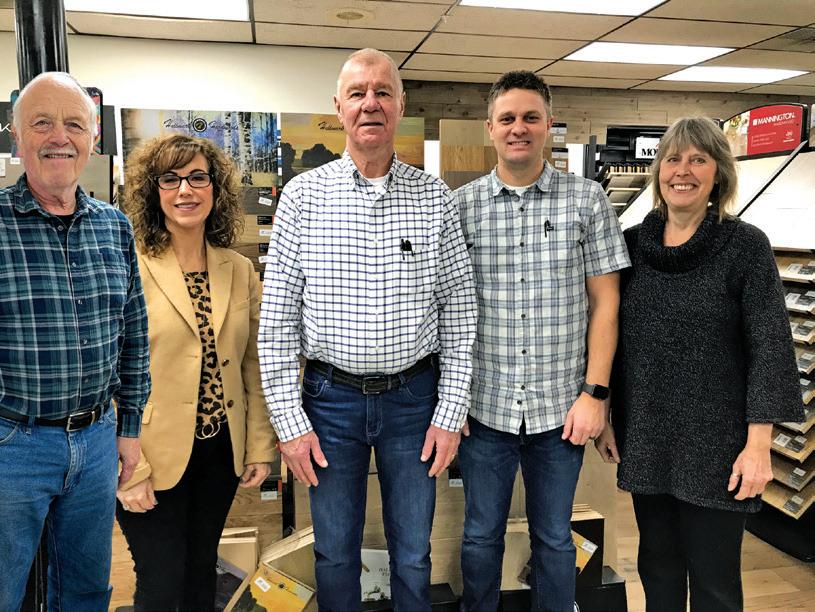
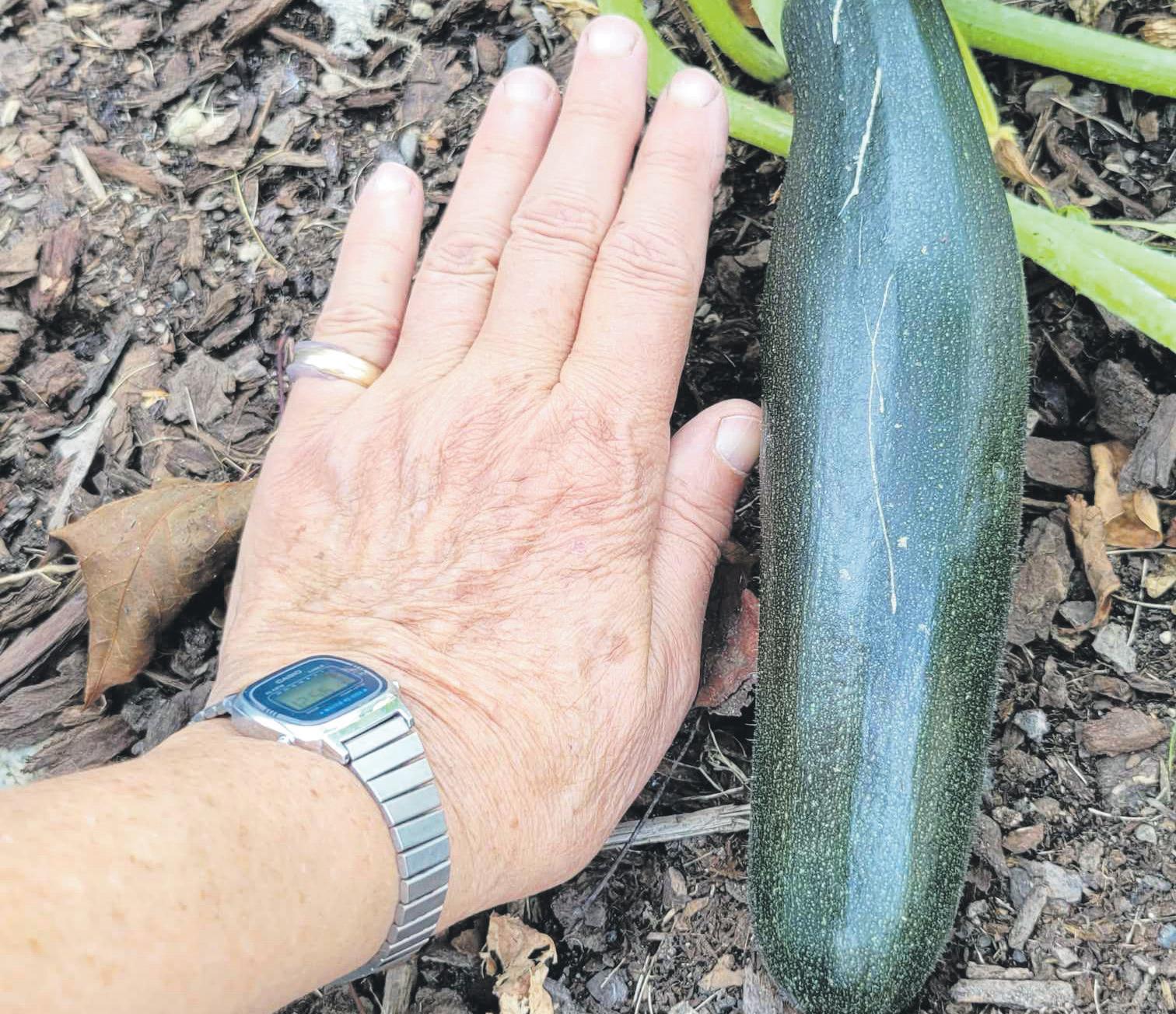
Many gardeners are fans of zucchini, and why wouldn’t they be?
Zucchinis are nutritious and almost guaranteed to thrive in the garden.
Once planted, they seem to grow and grow ... and grow some more.




over by Italian immigrants.
The moderate climate of the Pacific Northwest provides ideal growing conditions for zucchini.
The best time to plant directly into the soil is mid-May, after the danger of our ever-lingering frost has passed.
If you plan to start seeds indoors, aim to plant them by late April or early May at the latest. Zucchinis are typically ready for harvest by late July or early August.
It’s best to pick zucchini when they are approximately 10 inches long. If left to grow too large, they lose their best flavor and can become tough.
According to Mary Lou Childs, gardening enthusiast and former founder and leader of the Lynden Gardeners & Social Group, zucchinis grow from both male and female flowers. If a female flower isn’t pollinated, the ovary behind the flower — which begins developing into a zucchini — simply shrivels up and dies.
“People often think their plants have a disease, but in many cases, it’s just a lack of pollination,” Childs said. “I’ve handpollinated zucchinis using a small water-


color brush. Last year, at the Lynden Fire Station, we had a zucchini plant that only produced female flowers.
As a result, all the zucchinis that started to grow withered and died. But once we hand-pollinated some of the female flowers with pollen from male flowers on another plant, we managed to harvest a few nice zucchinis.”
A WSU-trained Master Gardener, Childs suggests planting flowers that bees love near the zucchini to get better pollination or growing the zucchini up onto a tilted wooden pallet and planting flowers on the under or back side to invite pollinators to visit the zucchini flowers.
Preventing the zucchini explosion
What about that dreaded zucchini overload? Childs said she keeps it simple.
“If you don’t want a ton of zucchini, don’t plant more than you need,” she said. “Planting one, maybe two plants at most is about right.”
Now that you’re equipped with insights into the origins and nuances of zucchini — along with some practical growing tips — your love-hate relationship with this versatile fruit might just blossom into a bountiful and rewarding success.


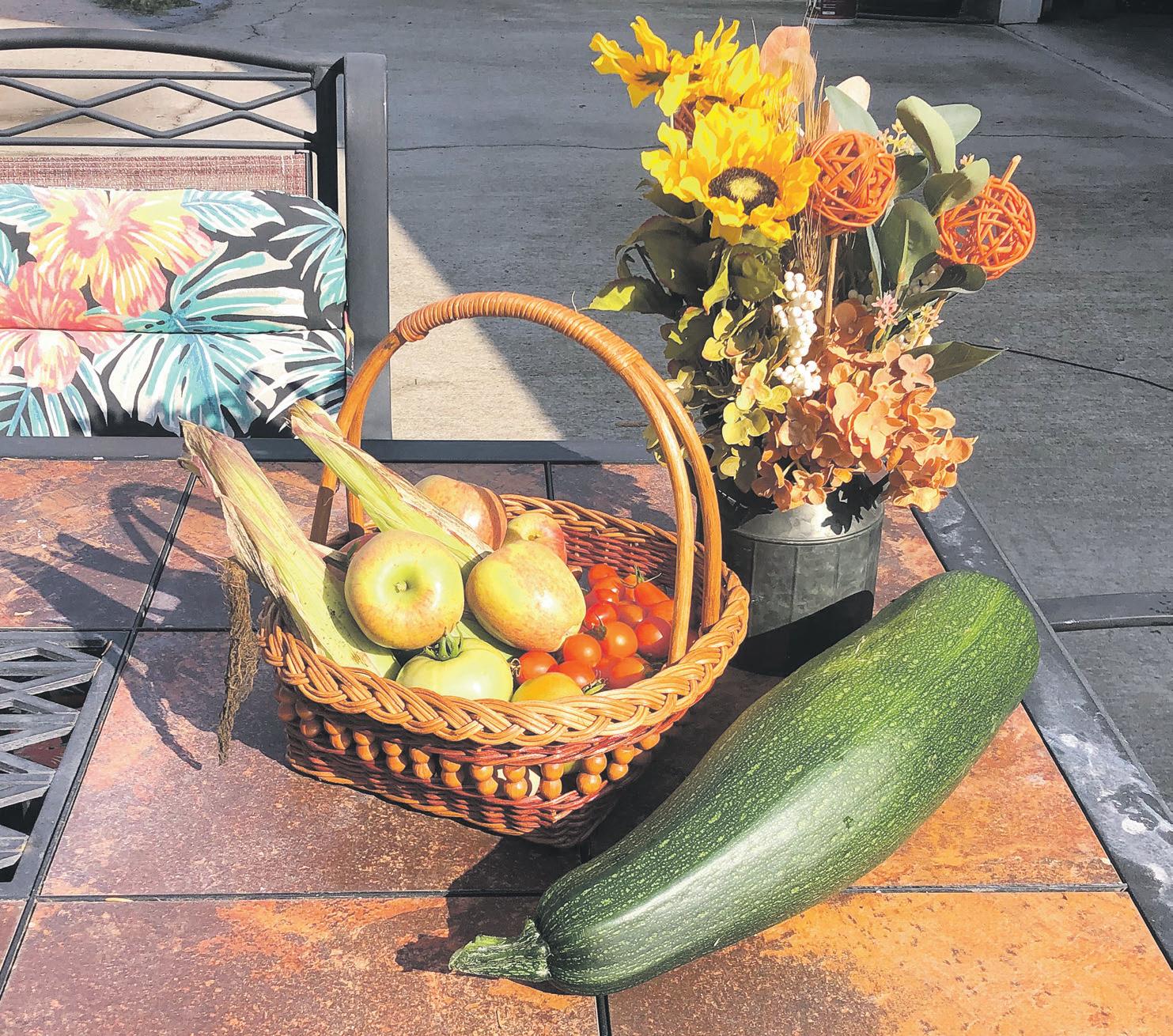

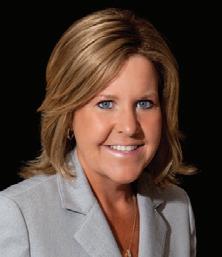
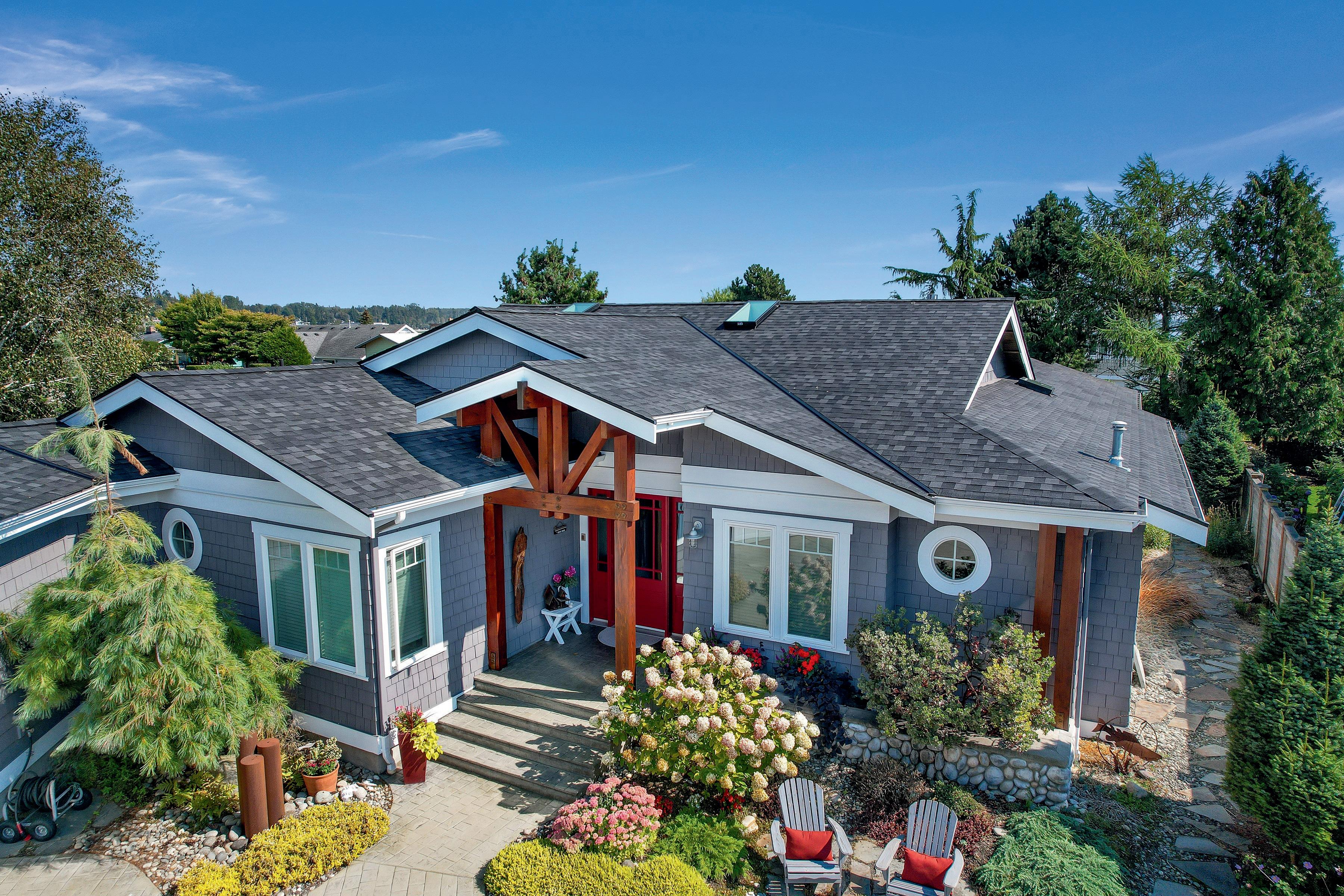

“Mt Baker Roofing did a excellent job on reroofing my house. I was so impressed in how they cleaned up every evening. They left a very clean worksite. The roofers worked so hard right before Christmas when the days are short and the weather unpredictable. They were fast but thorough. I would definitely hire again. Their price was quite reasonable. They are a well managed, excellent business. Great work everyone!”
Sandy H



“The crew showed up early and got to work immediately. It seemed like an army on the roof all working hard and getting the shingles off in a coordinated fast pace. We ended up needing sheeting over the entire roof but they took care of that in a day and then started on the new beautiful shingles!
These 6-7 men worked very hard and did a professional job in just 3 days! They continually kept our property cleared of debris and protected vulnerable plants. Highly recommend this company!”
Marci Plank
By Elisa Claassen For the Tribune
LYNDEN — The home with a Europeankind-of-farmhouse-vibe sits in the midst of a 15-acre parcel within open fields to views of nearby Canada and Mount Baker.
Landscaping and a few other details are in progress, but right now the minimalist look within the adjacent fields doesn’t seem out of character.
Enter through the black-topped drive through the portico and exit the car on a rainy day. A few cats and even a few chickens run by. One outbuilding has become a weight room and the detached car garage is in the back.
The former garden space by the shop will likely be recreated with raised garden beds closer to the home and garage as Becky Weeks said she loves to garden.
Becky and Braden Weeks decided at an early age what they wanted and they have worked for it. After Lynden Christian High School, Becky studied certified dental assisting at Bellingham Technical College, then interned at Veltkamp Family Dentistry, where she has stayed.
The couple married 12 years ago and now have two school-aged children who now have their own rooms and anticipate a new play area to be developed soon outside for summer days.
The couple said their home, north of Lynden on Pangborn Road, fell into their laps as a family friend was offloading land to buy other property out of state.
“We were not really looking,” Braden said. The property is within the agricultural zoning and the back portion is leased to a neighboring farmer to make hay.
Braden uses his engineering skills during the week at his day job but has served
Becky and Braden Weeks said their home north of Lynden fell into their laps. “We were not really looking,” Braden said. Pictured, Becky Weeks. (All photos from this story are courtesy Dan DeWaard/Perch Architectural Photography)
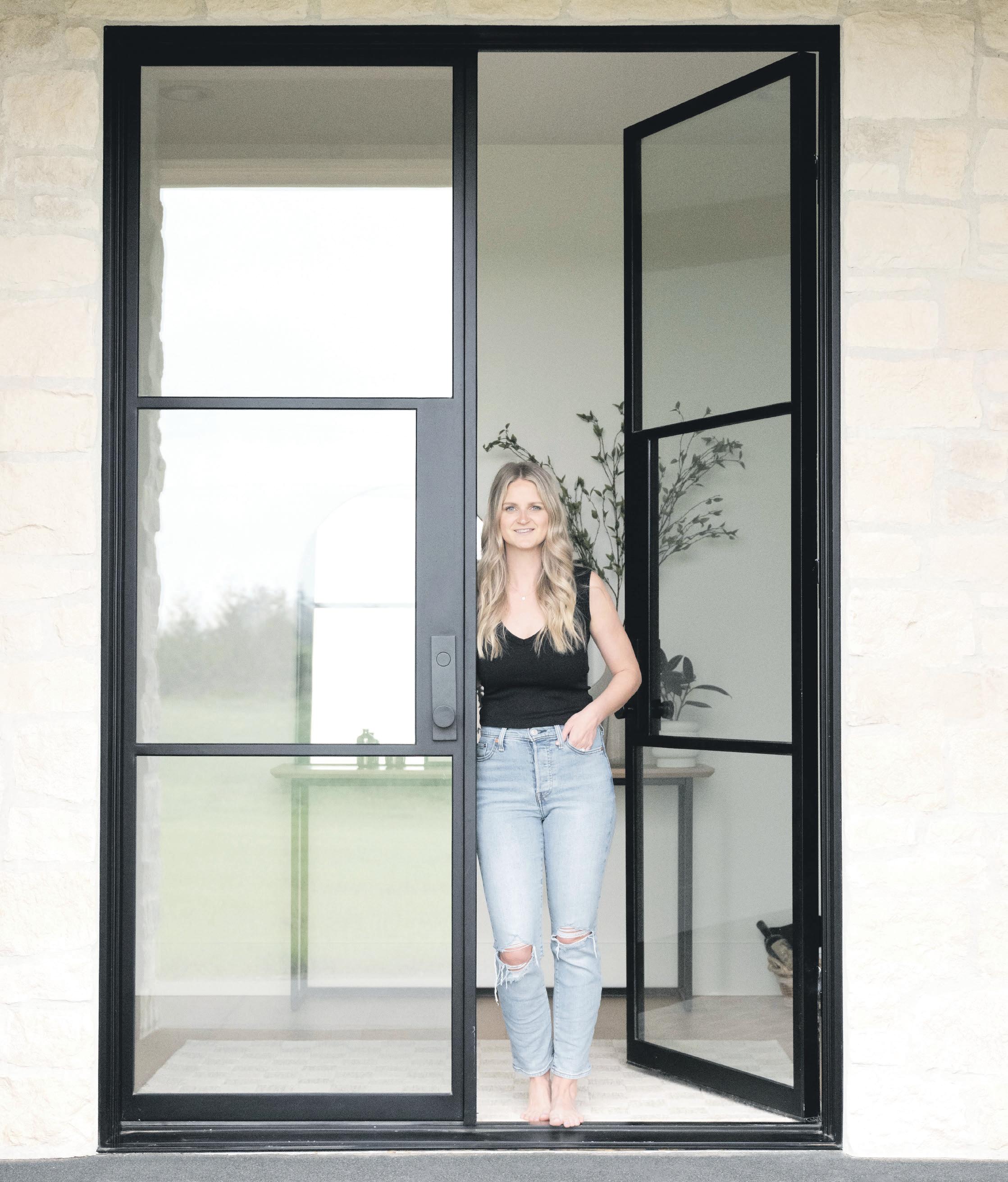
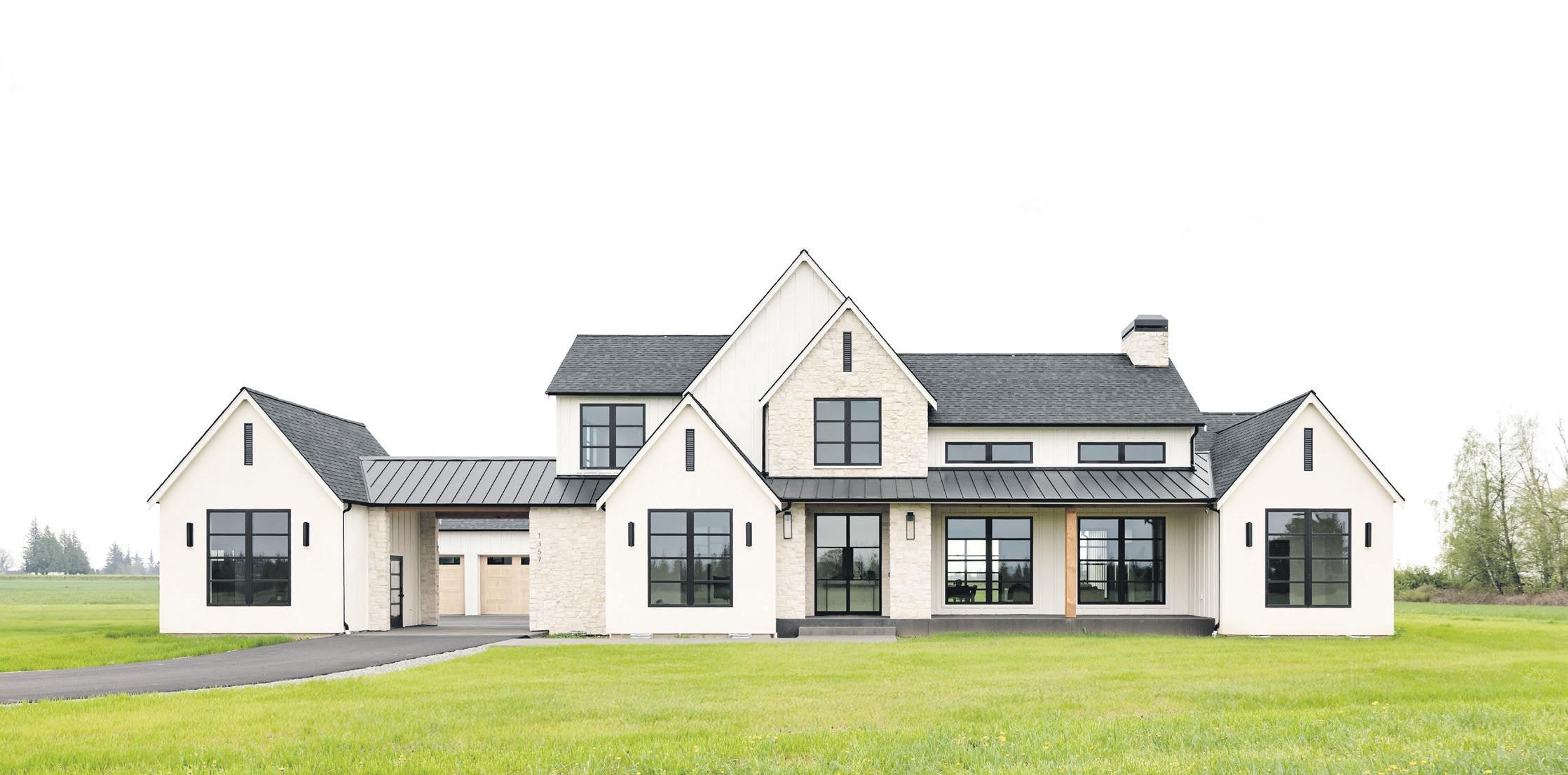


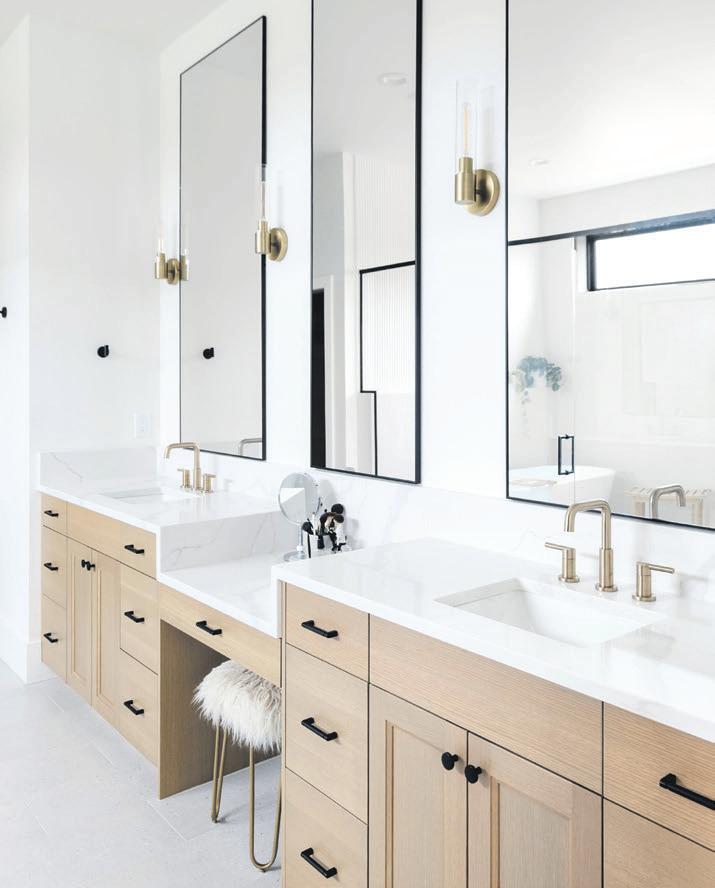

as the general contractor on this and previous homes they have built. While they tended to stay in previous homes within two years and then move onto another building project, they said they have agreed this is the place in which they want to stay. It’s a place for kids to grow up in, and for the family dog — who Braden got before their marriage — to also play. The kids had suggested a new play area.
While the family previously used the skills of Jerry Roetcisoender, founding owner and designer at JWR Design in Lynden, this time son Lucas Roetcisoender took them on the design journey with a few nods design-wise to previous homes.
“I think they’ve changed a bit, but definitely similarities each time, we realize,” Braden said.
The two admittedly learned along the way and refined the view, albeit with a look at resell marketability especially in their prior choices.
See Weeks on next page






“My dad was able to teach me a lot of the basics,” Braden said, when asked how he developed his building skills, with installing wide-plank engineered-hardwood flooring and setting up concrete molds. Becky added there was also plenty of Braden taking the initiative and learning what needed to be done.
Becky also took ideas from Instagram and other online sources to complete what the two of them thought as the plans went forth toward completion. While a previous home used salvaged wood from a fallen barn on the property, this one retained furniture from before.
“It took us a little bit longer to build this house than our other ones, just because we were doing a lot of it ourselves,” Becky said.
The process started with building a shop/house on the property. After they lived in the much-smaller 900-square-foot space, in which the kids shared a room with bunk beds, this 3,680-square-foot home means the kids each have their own room.
Key to the design is what is seen not only from the inside looking out, but from the outside looking in. Becky said they were keenly aware as the home is viewed
See Weeks on 23
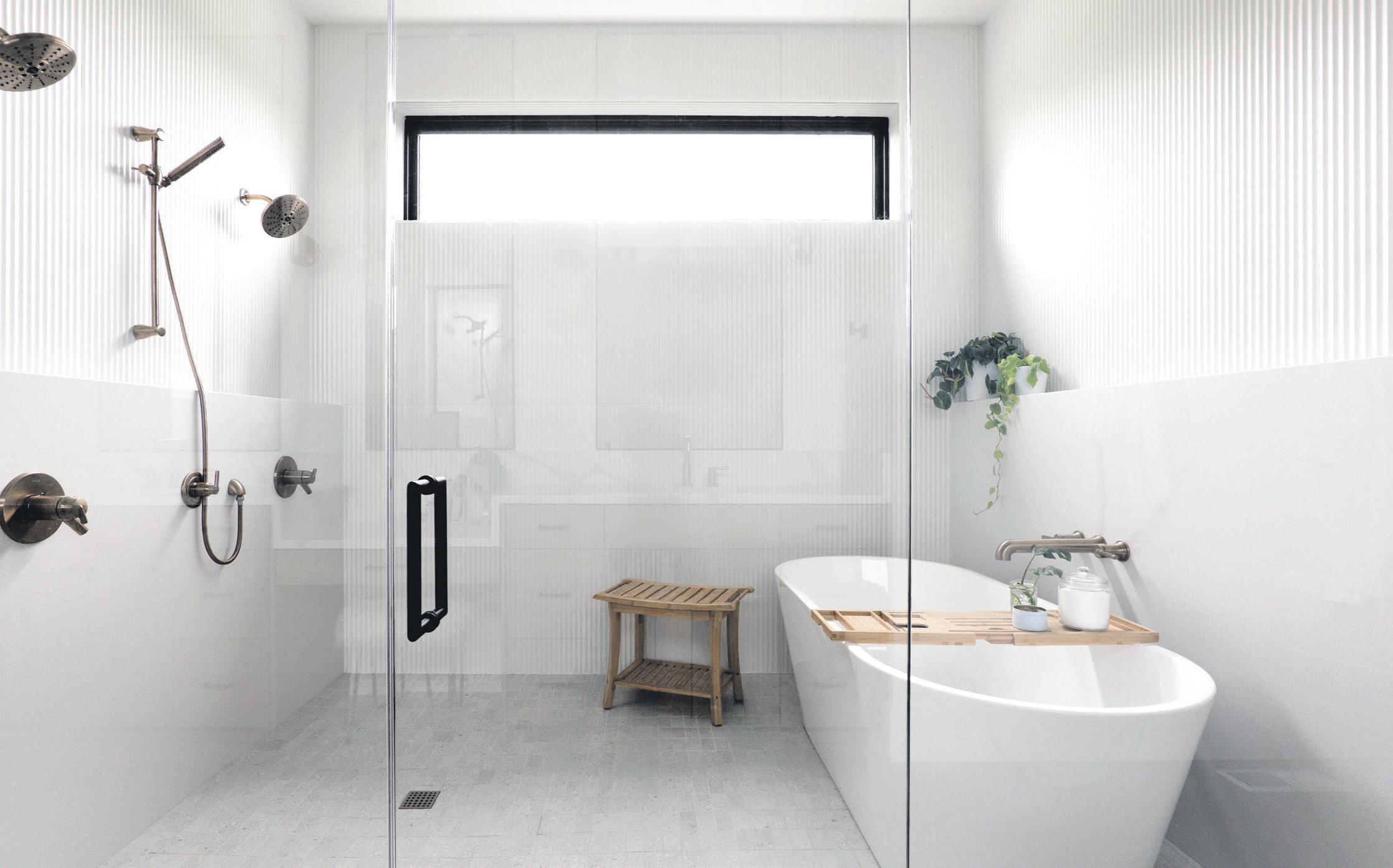



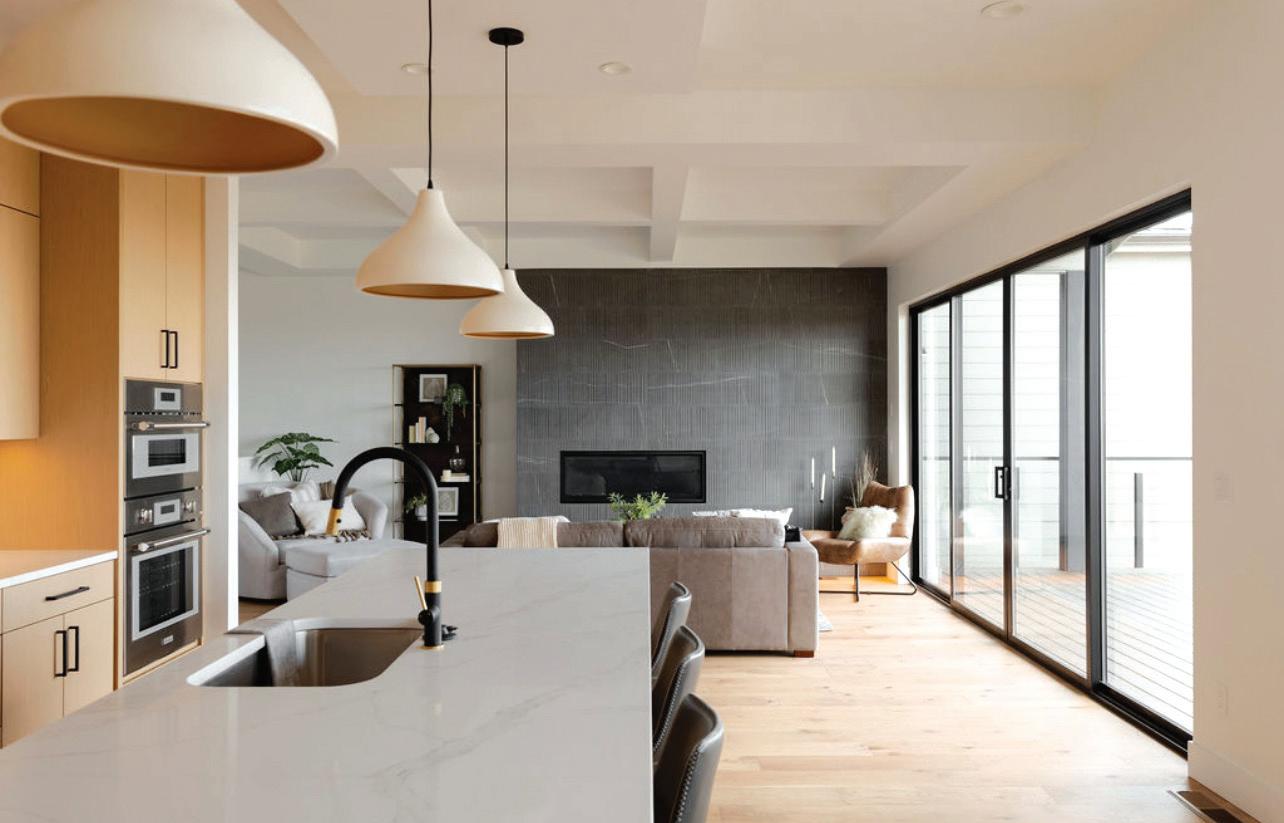





If you ’ re ready to upgrade your appliance, see what we have in store! We service what we sell, ensuring a seamless customer experience. This way, you ’ ll enjoy years of utility from your beautiful, durable home appliances from top-name brands like KitchenAid Talk with our appliance experts to learn more.



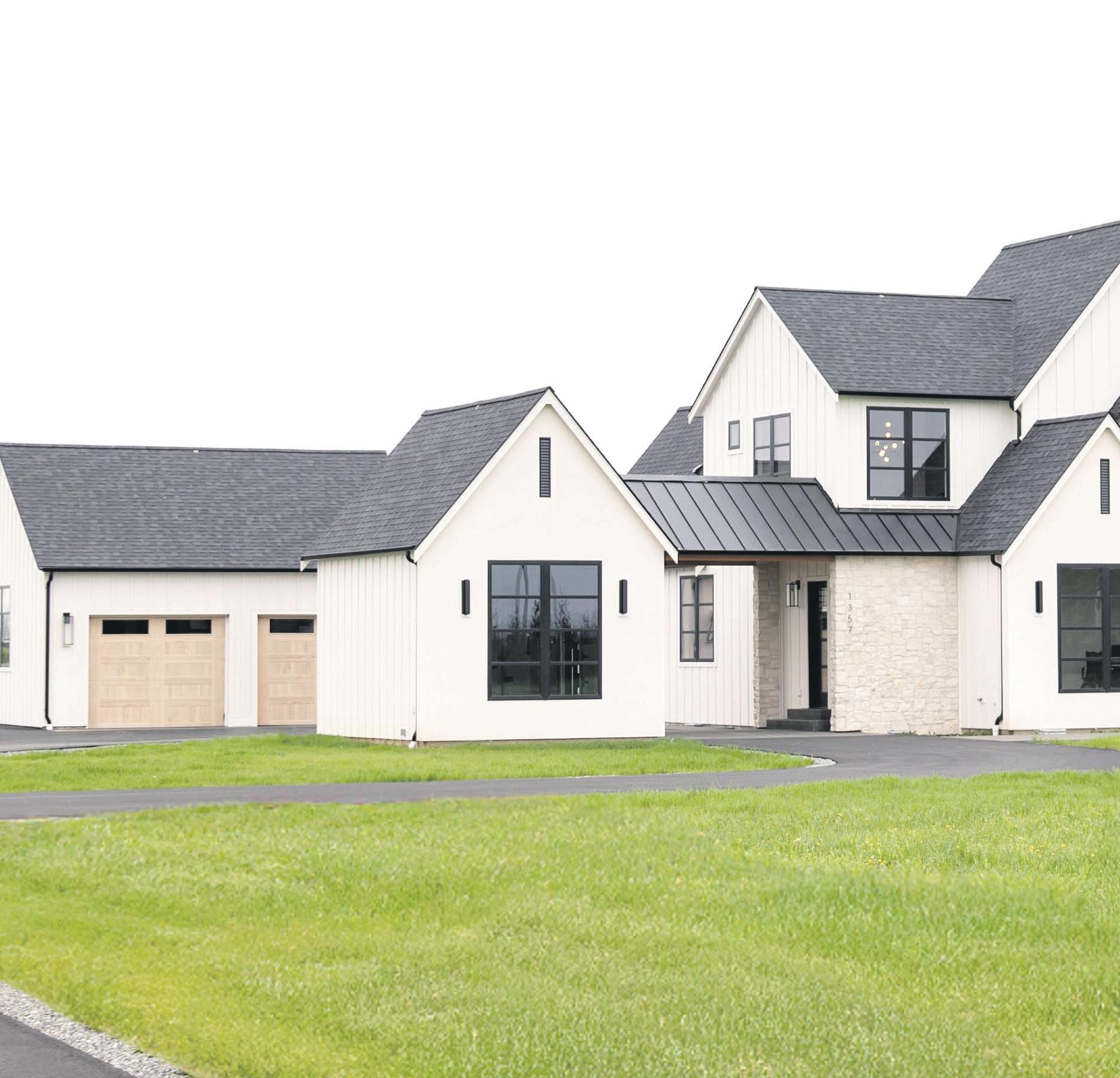
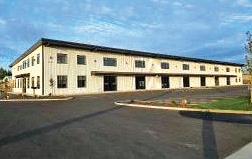



from the street to see uniform, and large, eight or nine-foot windows.
The palette within has been kept toward the minimal: earth tones, black accents and lots of white. Both Becky and Braden said this home is meant to be lived in: children, dog and all.
The home has several entry points, such as an eight-foot-high iron-and-glass front door from Pinky’s Iron Doors from California, a side entrance, and a back entrance through the laundry and storage locker space. Once through the entrance door, the large great room – consisting of the living room, dining area and open to the kitchen is viewed to the right.
The stairs are to the left, with bottom accent lights. Also to the left is the home office, which is primarily used by Braden, with both a large window and upcoming bookcases.
The beautiful metalwork of the stair railings were done by Becky’s brothers Brent and Derek Tjoelker, who fabricate.
The second floor comprises the two children’s bedrooms and shared bath –with under cabinet kick lights for night visits. This allows much of the downstairs to have a high vaulted ceiling. The parents’
See Weeks on next page





master bedroom has a spa bath ensuite: a shared walk-in closet, side-by-side sinks with extra counter space, a wet room concept of a large bathtub within the glassed-in shower area which Braden says the kids enjoy as they can splash, and a sauna.
The sleeping area faces a fluted-wood faced fireplace topped by in-wall television. Another large television screen is placed high above the fireplace in the living room. Large farmstead chandeliers rise high above the floor of that space to match the scale of the room.
Within the kitchen is the smaller-end of commercial grade JennAir gas stove across from the 5’ by 8’ quartz-topped island that contains a microwave and storage on one side and seating on the living room side. Within view is the playroom and television space where the family tends to congregate, with a large hidden away toy storage area under the stairs, and where Becky keeps her eye on the kids while she works on meals.
A faux-farmhouse sink is placed on the wall with the window onto the covered patio. Adjacent to the kitchen is a walk-through butler’s pantry with a door on one side to the hall.
From the back entrance, vented floor-toceiling black colored storage units open for each family member to store school items, backpacks, athletic wear and shoes. Both the laundry room and playroom have sliding barn doors to provide openness when appropriate or to hide away when company comes.
Even with the openness of the home, many cabinets present opportunities to store all types of things. The fridge and dishwasher have paneled finishes to blend in, something their home designer also did in his home.
The Weeks wished to thank Lucas Roetcisoender for his contribution to their home. Much of the decor comes from a pop-up shop Becky and her mother Kim Tjoelker share at Kim’s home, Vintage Goods & More, near Everson at 7989 Trapline Road. It will next be open for Mother’s Day on Saturday, May 3 from 10 a.m. until 3 p.m. with other featured guest small businesses.
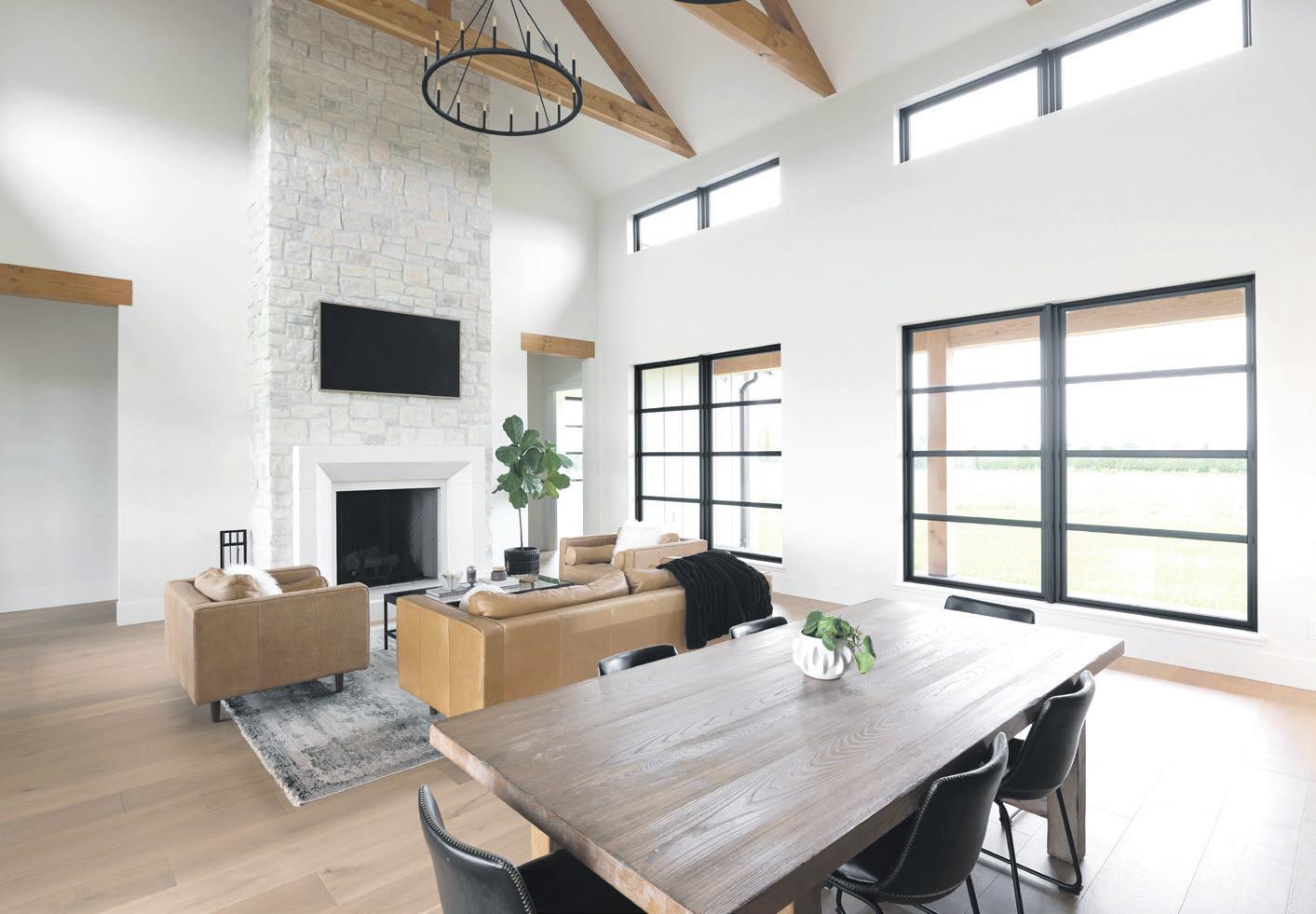
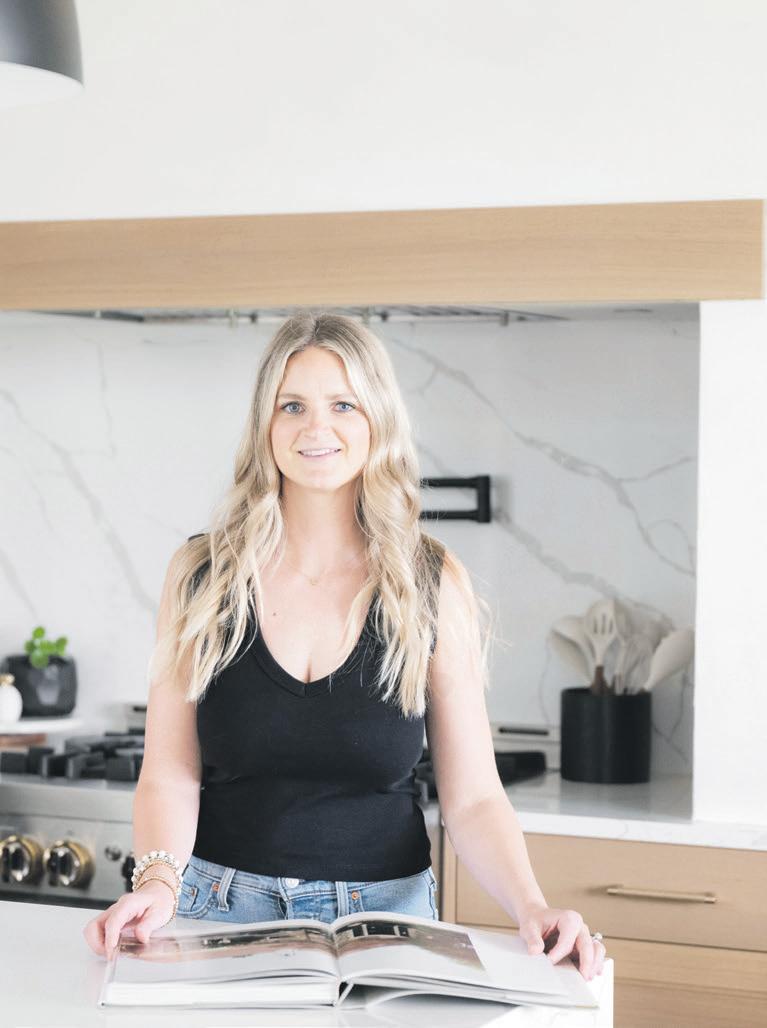

The Weeks wished to thank Lucas Roetcisoender for his contribution to their home. Much of the decor comes from a pop-up shop Becky and her mother Kim Tjoelker share at Kim’s home, Vintage Goods & More, near Everson at 7989 Trapline Road. It will next be open for Mother’s Day on Saturday, May 3 from 10 a.m. until 3 p.m. with other featured guest small businesses. (Photos courtesy Dan DeWaard/Perch Architectural Photography)
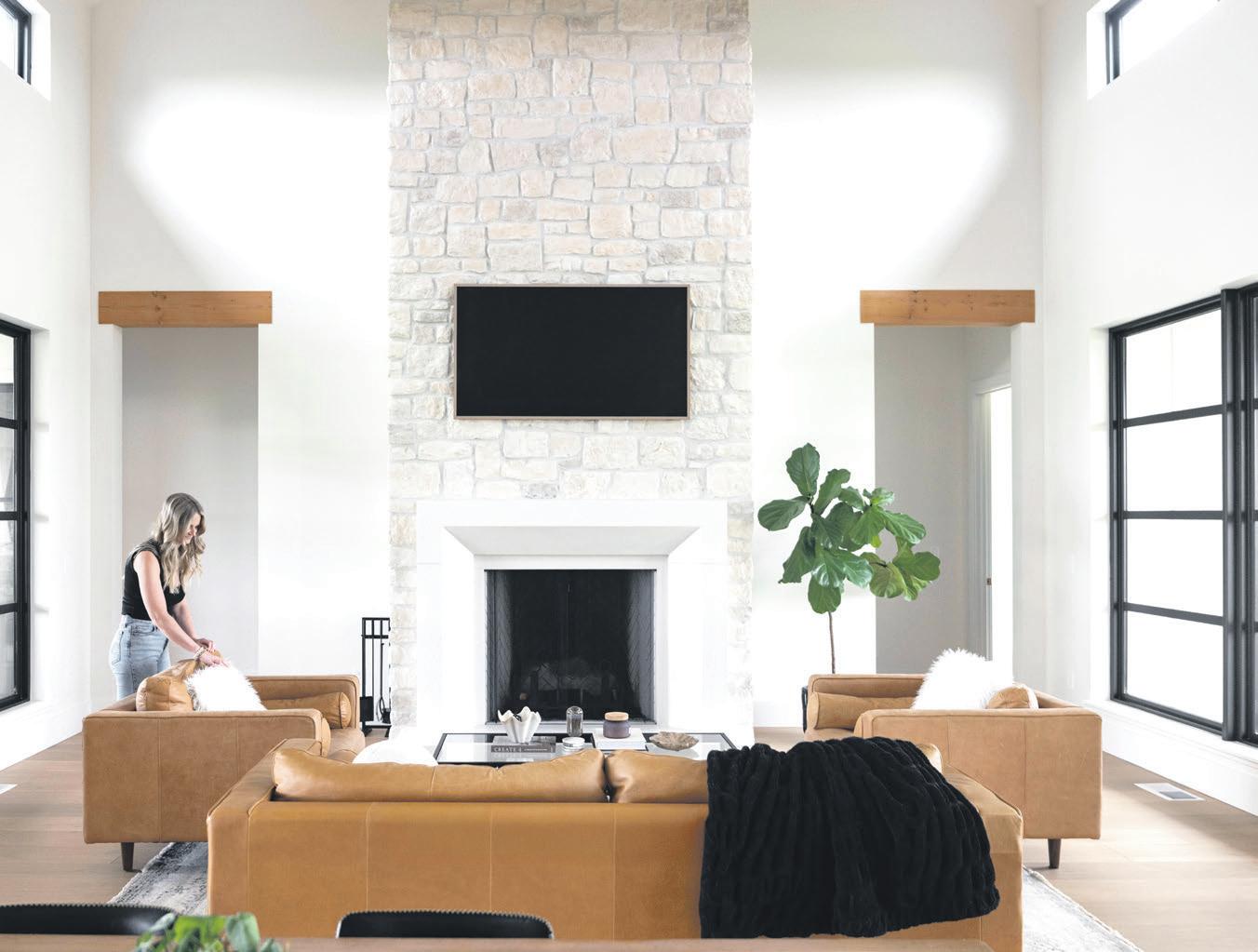








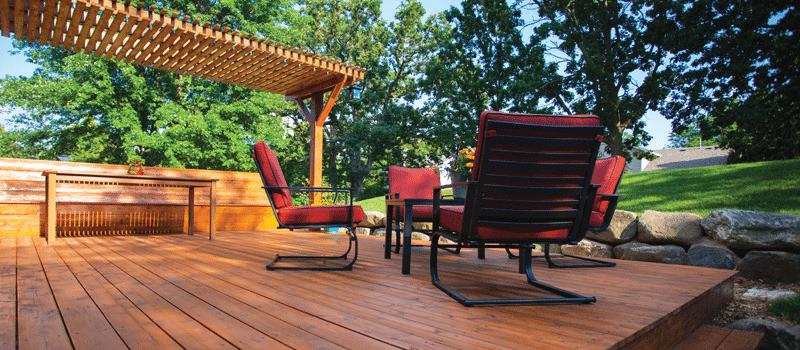




By Bill Helm Editor
LYNDEN — A lot has changed since a French physicist made what is widely considered the first ever photograph.
For Dan DeWaard, black and white photography is still a beautiful thing, the simplicity and all. However, as founder of Perch Photography, the Lynden man specializes “in capturing the essence of residential, commercial and industrial spaces through minimalistic yet impactful photography,” his website states.
Perch Photography creates beautiful color images for DeWaard’s clients with a “lifestyle and minimalistic feel that showcases both the beauty and functionality of each space.”
“We have a deep appreciation for contemporary and sustainable designs and strive to capture the unique characteristics and beauty of each structure and dwelling,” DeWaard states at his website, perchnw.com. “Our goal is to create meaningful images that are full of life, movement and emotion.”
Photography is a creative endeavor, no doubt. For DeWaard, it’s been close to two decades since he fell for the creative art.
“I had always been fascinated by technology and design,” he said. “About that time, digital SLR cameras were just coming out and the idea that I could take quality photos that I could edit with Photoshop sparked my curiosity.”
Not long after, family friends asked DeWaard to photograph their baby.
“My photography quickly took off to the point I started my first photography business, Hatch Photography,” he said. “At that time, I named it Hatch because I thought I was destined to be a family and newborn photographer and thought it would be cute to categorize my work such as newborns as hatchlings and playing off the name Hatch.
But the biggest reason for naming it Hatch versus using my name (an industry standard) is I didn’t have confidence in my skills as a photographer and didn’t think this business would last, so I didn’t want to put my name on it.”
Eventually, Hatch reached out beyond its original intent to include portraits of all age groups, as well as weddings. However, it was during the COVID-19 pandemic, or possibly because of it, that DeWaard explored architectural photography.
“I got inspired by a family session I did and they just
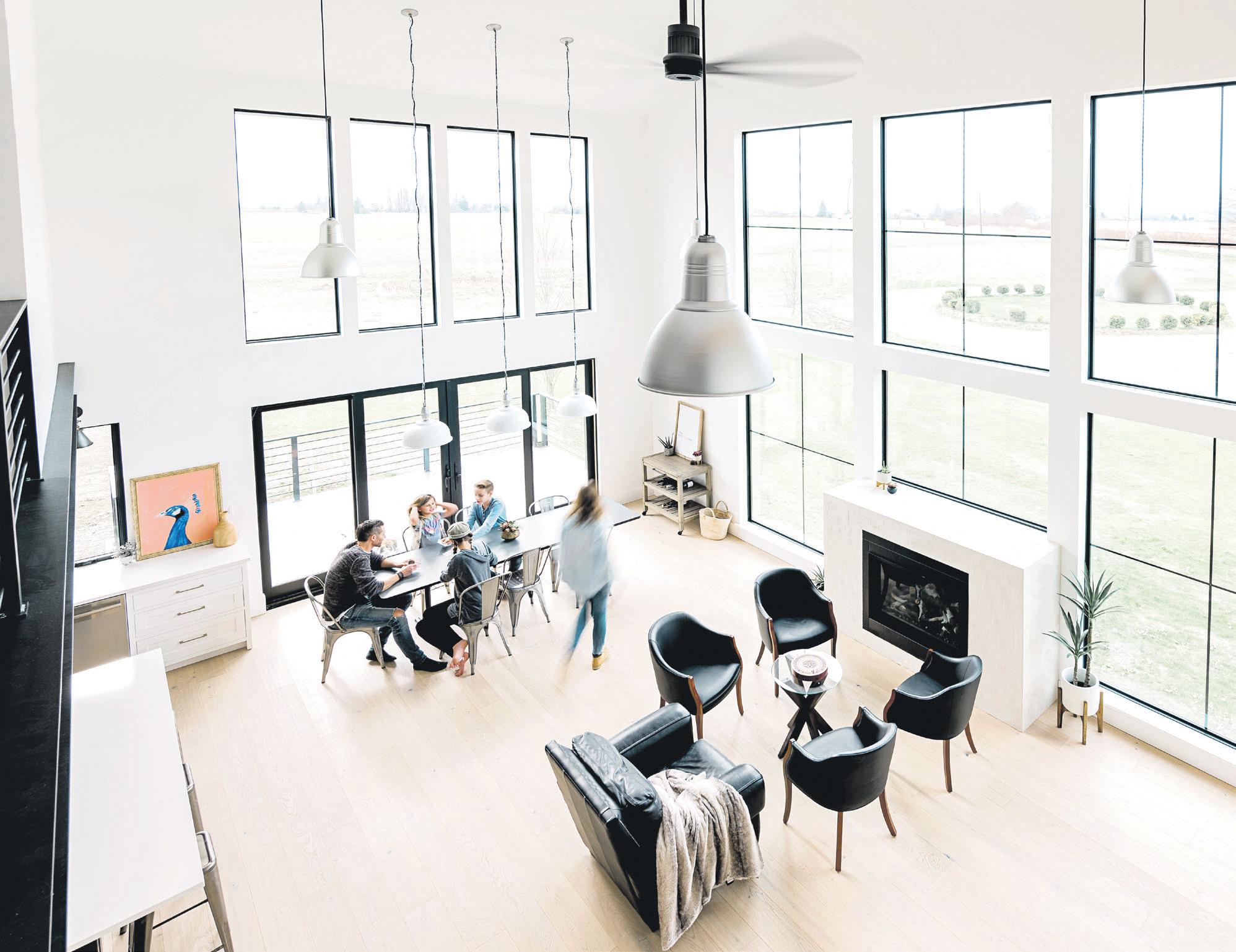

Perch Photography creates beautiful color images for Dan DeWaard’s clients with a lifestyle and minimalistic feel that showcases both the beauty and functionality of each space. "We have a deep appreciation for contemporary and sustainable designs and strive to capture the unique characteristics and beauty of each structure and dwelling,” DeWaard states at his website, perchnw.com. “Our goal is to create meaningful images that are full of life, movement and emotion.” More on Perch Photography at perchnw.com. (Photo of Dan DeWaard by Bill Helm/Lynden Tribune. Photo above and on the following pages courtesy Dan DeWaard/ Perch Architectural Photography)
happened to be part owners for a high end construction company, Dovetail,” he said. “I have always appreciated home designs and design in general. The more I researched Dovetail and architectural photography, the more I became interested in the idea of creating a separate photography, and Perch architectural photography was started. It took a few years of planning and working on creating a portfolio, but I can confidently say Perch is an architectural photography and media business.”
Perch specializes in conceptual architectural and interior photography. Although the subject matter is so vastly different from his work with Hatch, DeWaard’s artistic sensibilities are still the key to his work.
“I have always loved design and architectural photography naturally became of interest to me,” DeWaard said. “I appreciate the design and craftsmanship that goes into building a home or commercial building and space. I love that I can bring my portrait
experience into these architectural photos and capture these buildings and spaces for designers and builders. I find that there are so much beauty in well-built, well-designed buildings and spaces.”
The following comes from a Q&A session with Dan DeWaard, conceptual architectural and interior photographer, and founder of Perch Photography.
Lynden Tribune: How do your talents and skill sets help you with your architectural photography?
Dan DeWaard: With 15-plus years of photographing weddings and portraits in several different parts of the country, Canada and Mexico and working with small and big companies, one notably being Disney World, has brought me so much experience and exposure to such amazing architecture and spaces that combined with portraits and the love for the minimalist designs, naturally led
See DeWaard on 28
owned since 1929
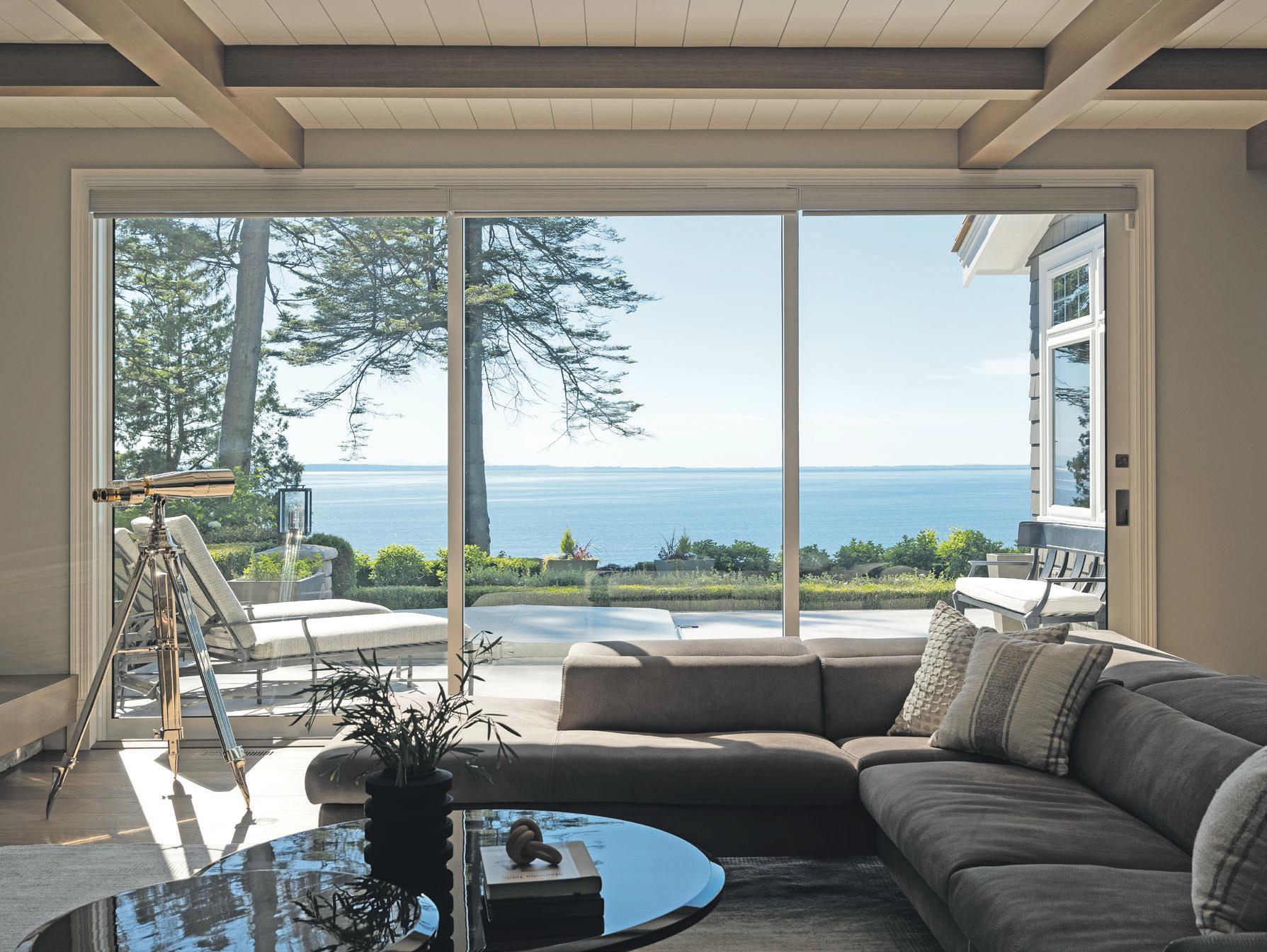


me into architectural photography.
Tribune: What kind of camera equipment do you use for your architectural photography?
DeWaard: I truly believe that the brand of equipment that you use is irrelevant compared to the equipment you need. For me, I try to always keep things as simple as possible and try to use natural light as much as possible. If there isn’t much quality natural light available then I will use [artificial] lighting to mimic natural light. I use a digital full-frame camera, an ultra-wide zoom lens and a medium focal length zoom as my primary lenses that are mounted onto a tripod. I use a speed light or continuous lighting when needed and that is about it. Since I do photography full time as a living, I believe finding a camera brand that fits your
style and something else that isn’t talked about much, ergonomically fits your hands and shooting style. For me, Leica cameras fit my needs perfectly. Other great brands would be Sony, Canon, Nikon and Fuji. Most importantly for a camera system that it is a full-frame sensor.
Tribune: How important is image editing software?
DeWaard: Using editing software is essential, especially when working for clients. It allows you to create a certain look/style. A big part of editing software is allowing you to blend different exposures, which is so important when you’re trying to create high-end architectural photos. I try my best as possible to do as much as I can in camera, such as exposures and composition.
Tribune: What makes for a good photograph?
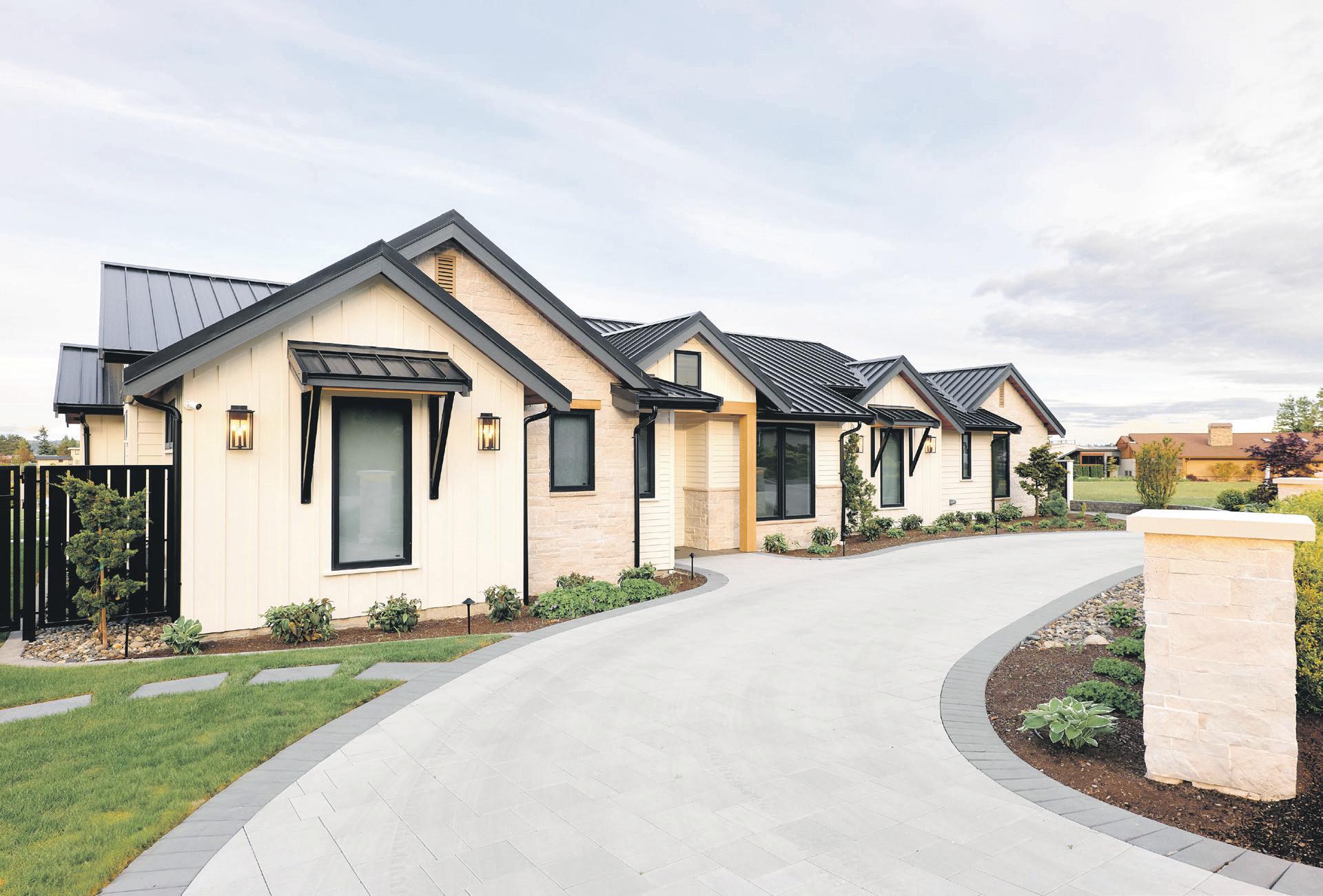




DeWaard: That is such a hard question to answer, as photography has evolved so much especially with the arrival of camera phones and platforms such as social media. Not to mention photo filters that you can apply in post or on your phone. But what I do believe has always remained true to what makes for a good photo is an image that has a story or purpose, good lighting and composition.
Tribune: Do you go to a shoot with a preconceived notion?
DeWaard: For architectural photography, there is a lot of pre-planning ahead. Sometimes we do a walk through with my client — architect, designer, builder — and get a feel of how the lighting is and see what my client wants highlighted. My clients tend to leave the creativity part to me, which allows me to photograph the building/home or space the way I see it, while keeping in mind my client’s wishes.
Tribune: On assignment, how many images do you shoot?
DeWaard: For architectural photography, I tend to shoot less than more and spend more time on making sure the light, composition and items in the space are
placed correctly. Although I do make sure to take a photos from different perspectives and angles and also get detail shots of certain details or important design features.
Tribune: What else is there to know about you?
DeWaard: What I love about architectural photography is I get to bring over 15 years of portrait and wedding photography experience to this field, which allows me to bring the lifestyle and human element to these amazing and beautiful spaces. Every custom structure and space all have its own unique designs and character, and more often than not have a meaning or story to their design that may have taken several years from conception to completion of build.
I feel it’s such a privilege to be able to photograph these structures and spaces and it allows me to bring my photography experience and challenges me to learn new photography techniques and disciplines. I am thoroughly enjoying this side of my business and have some amazing things ahead.
-- Contact Bill Helm at bill@lyndentribune. com.
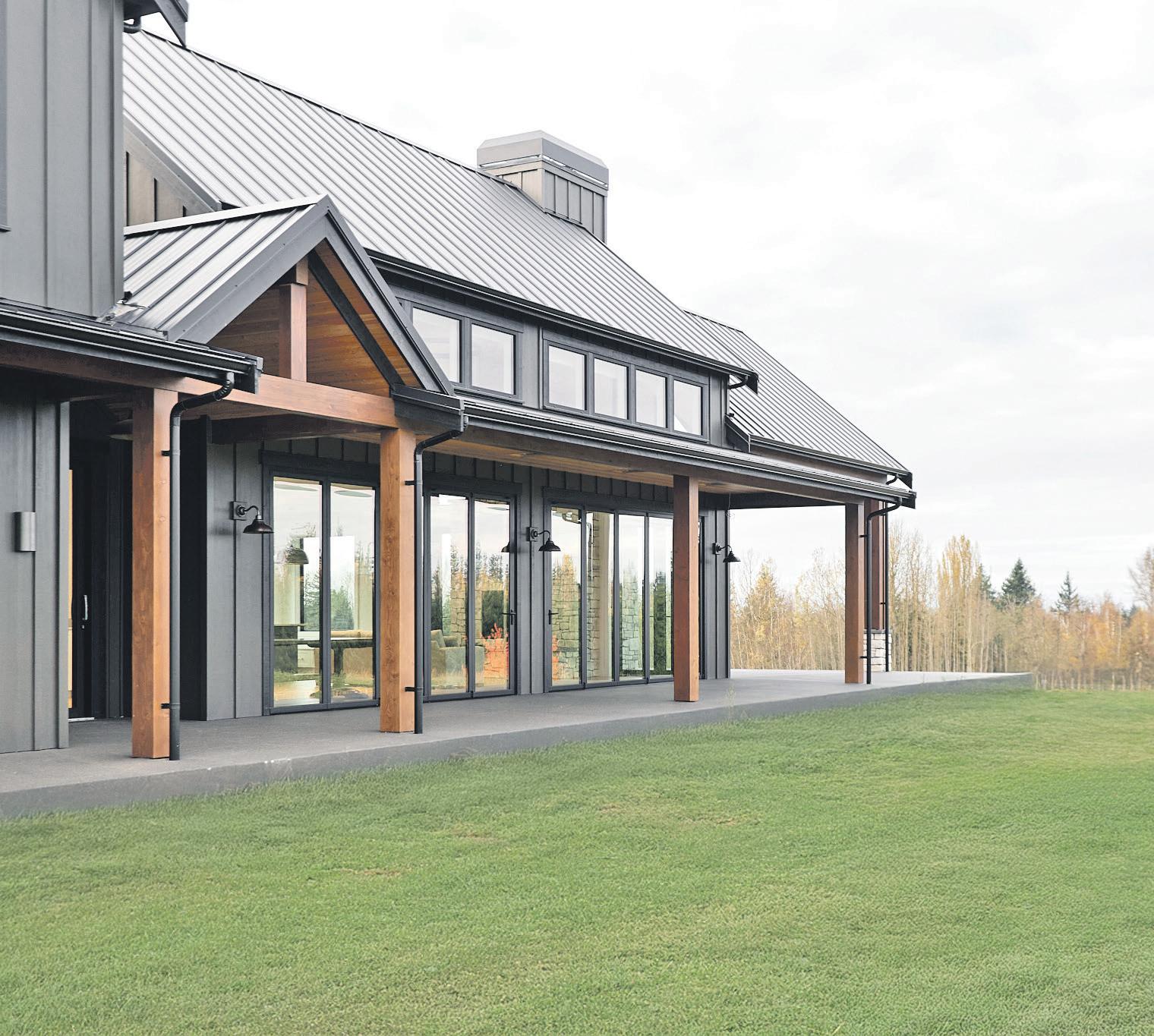

By Racquel Muncy Staff Reporter
FERNDALE — Kevin and Tammy Blakley had wanted their kitchen remodeled. Tammy said the cabinets and appliances were scratched and well-worn from the previous homeowners. The couple bought the house about four years ago and felt now was a “good time to pull the trigger.”
“We wanted a cleaner, more modern look,” Tammy said. After doing some research, Kevin found Casali Remodeling and after going through their reviews, decided to give them a shot.
Casali Remodeling is a family-owned contracting and renovation business based out of Lynden. They offer home remodels, new builds, custom decks and interior design services for Whatcom County.
“I liked that it was a small, family business,” Tammy said, adding that it brought a more personal level of service.
The remodel began in early December and finished up mid-April. Kevin said there were some bumps in the road, such as two farmhouse-style kitchen sinks coming in broken, several island counter panels coming in cut wrong and scratched cabinets, but none if it was the fault of Casali Remodeling.
“It was an adventure, but it was well worth it,” Tammy said.
Without those hiccups, Travis said the project likely would have only taken a month.
“Those took up quite some time,” he said.
While the project was ongoing, a little kitchen area with a microwave was set up for the couple so they could continue to live and eat in the home.
Kevin said the working crew left the space immaculate, sweeping, mopping and wiping down the area each day before they left. The Blakleys were left very impressed with how clean the construction environment was left each night.
“They did such good work,” Tammy said, half hoping the crews would remain with the cleaning effort past the end of the project.
Travis said they left most of the decisions in the hands of Alexa Casali, interior designer with Casali Remodeling as she had a good eye for what would look good in the space, would look good together and what the couple would like.
“I think we valued that input a lot,” Tammy said.
Casali had always been interested in the arts, but coming from a small town in Nebraska she did not see a job as an interior designer in her cards. However, moving to the area she saw a need, as there are many contractors able to do the remodel, but that leaves homeowners having to find all their own options.
“I thought I could fill that need,” she said.
She began working with her husband Chris in 2019. They started on smaller projects, one client at a time.
Now they are able to take on both larger projects and

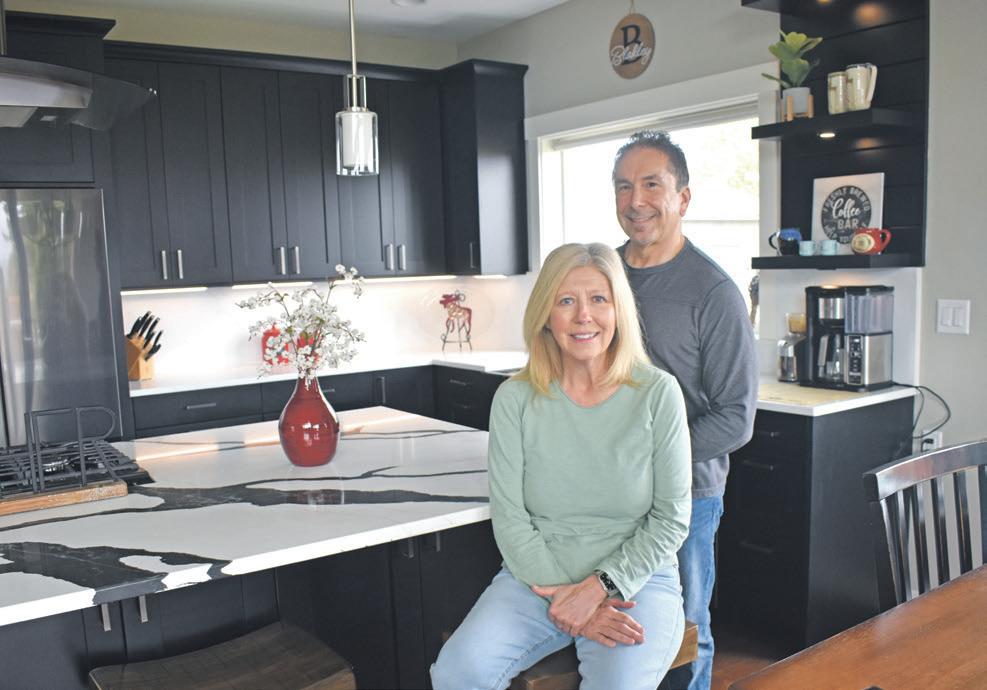
Kevin and Tammy Blakley, pictured above in their recently remodeled kitchen. After doing some research, Kevin found Casali Remodeling, a family-owned contracting and renovation business based out of Lynden. They offer home remodels, new builds, custom decks and interior design services for Whatcom County.
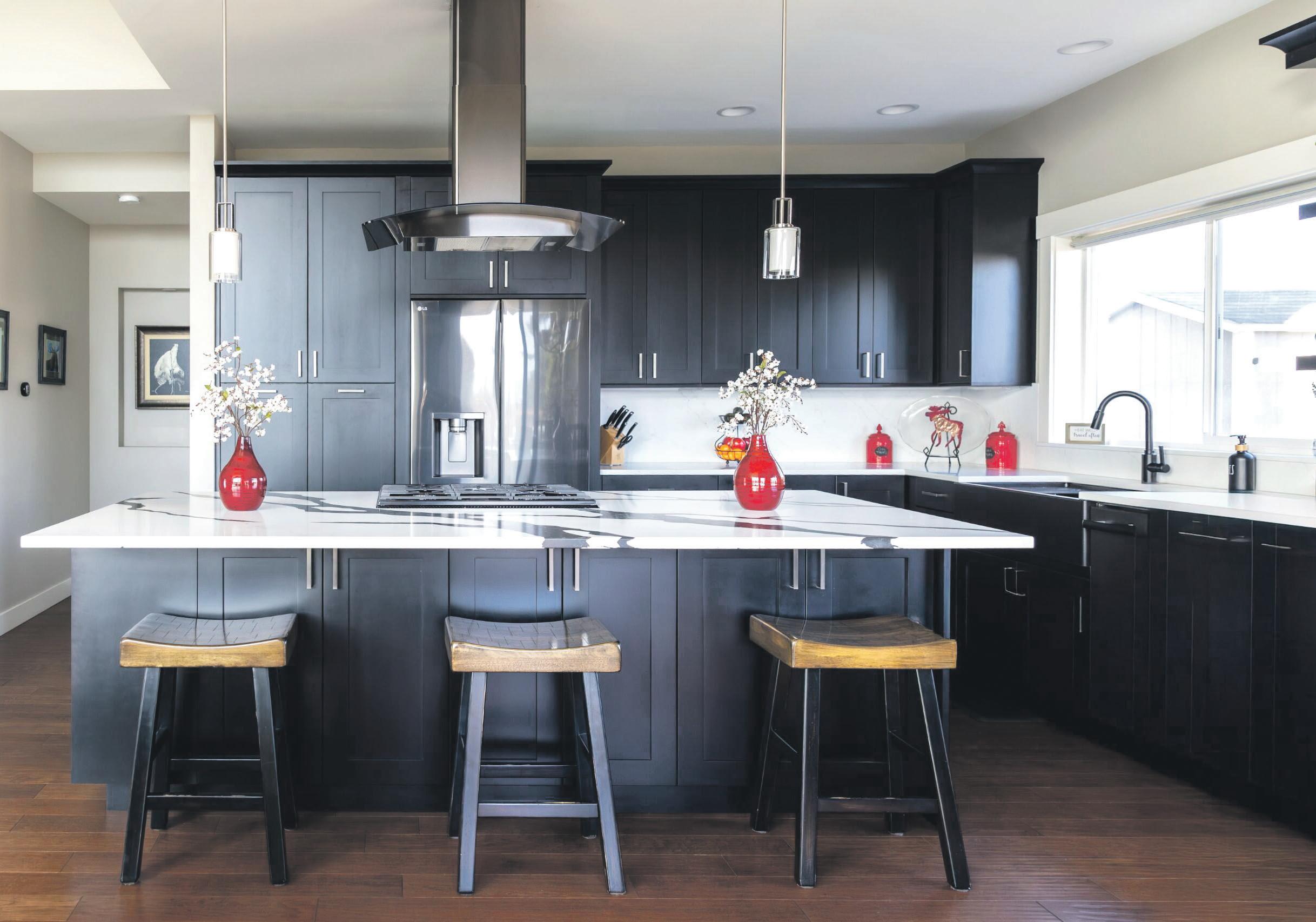
multiple clients.
Casali said she enjoys a variety of aesthetics and designs, allowing her to put the clients personality and preferences into their home while knowing what may or may not work well together.
“I don’t want to come in with a preconceived idea,” she said. “It’s their home and their space.”
Casali said it takes her about one full day to get everything set up in her design program and from there it is largely tweaking colors or types of cabinetries.
“It’s a process, but it’s worth it,” she said, adding that she specializes in kitchen and bathroom remodels.
Together they collaborated to make a masterpiece.
“It was not exactly as we pictured, but I think it’s much better,” Kevin said.
At times he said he was hesitant of a decision, but trusted Casali. One example of this is the placement of the microwave on the island. The initial thought was that it would take away storage space.
“We definitely did not (lose storage space),” Tammy said. “Everything is more efficient.”
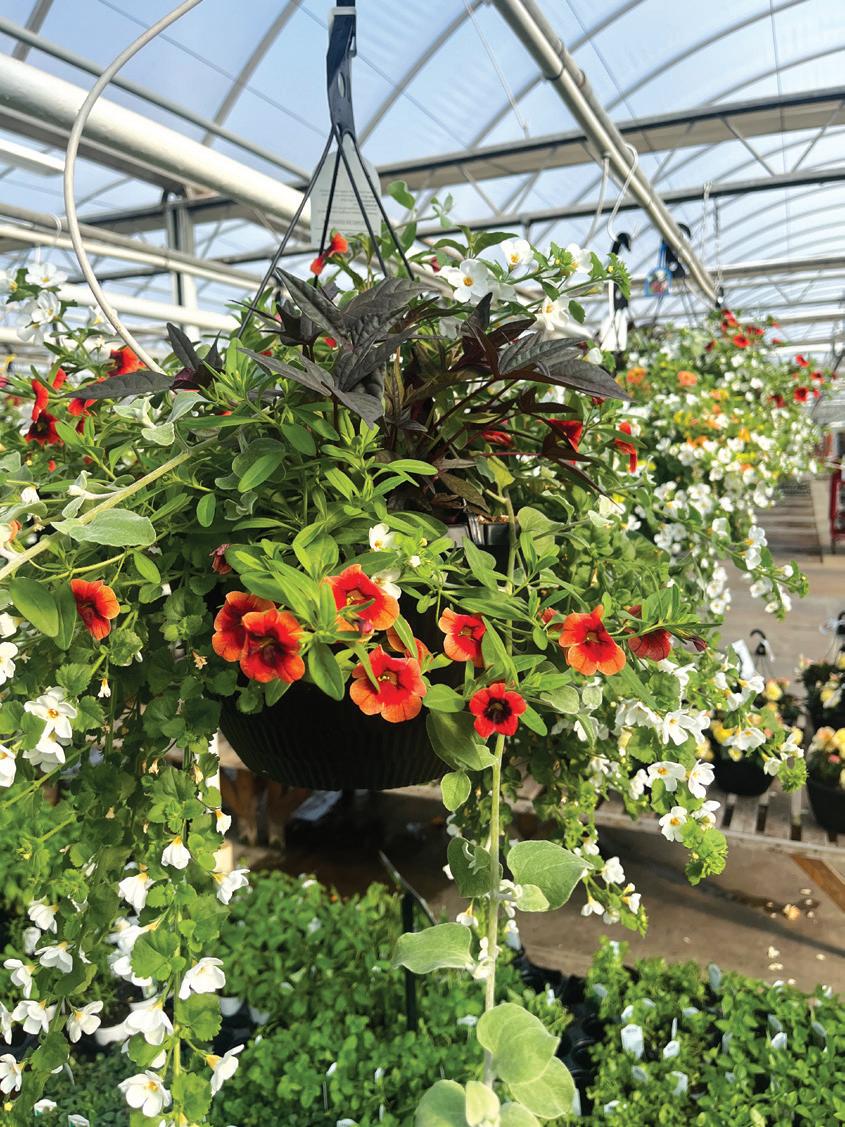
Other decisions felt like mini strokes of genius once they had been put into place. This included a pullout pantry so all items could be seen or having a small spice cabinet right next to the stove.
“That was one of those things,” Tammy said. “That was a genius Alexa move.”
Casali said the design evolved throughout the process to what eventually became the end product.
“Everything is just so much better,” Tammy said of the end product.
The island was more striking and paired well with the backsplash. The pantry was more convenient. Even the new appliances were an improvement.
Kevin said they recommend Casali Remodeling so highly that the couple is already planning to use them for their next project — a bathroom remodel.
“You could tell they were passionate about what they do,” he said.
A portfolio of the work Casali Remodeling has done, as well as more information on the business can be found at casaliremodeling.com.
-- Contact Racquel Muncy at racquel@ lyndentribune.com.


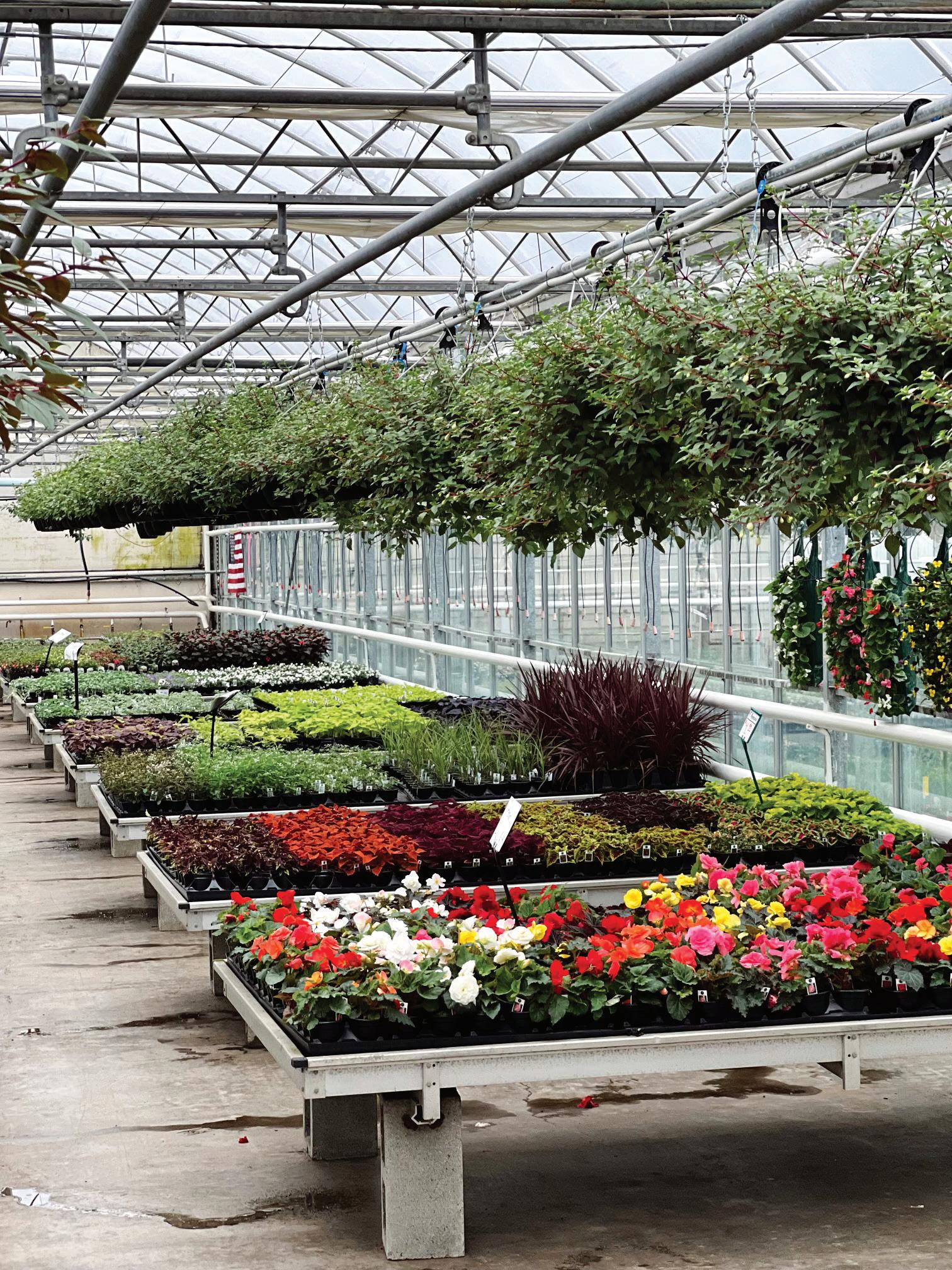









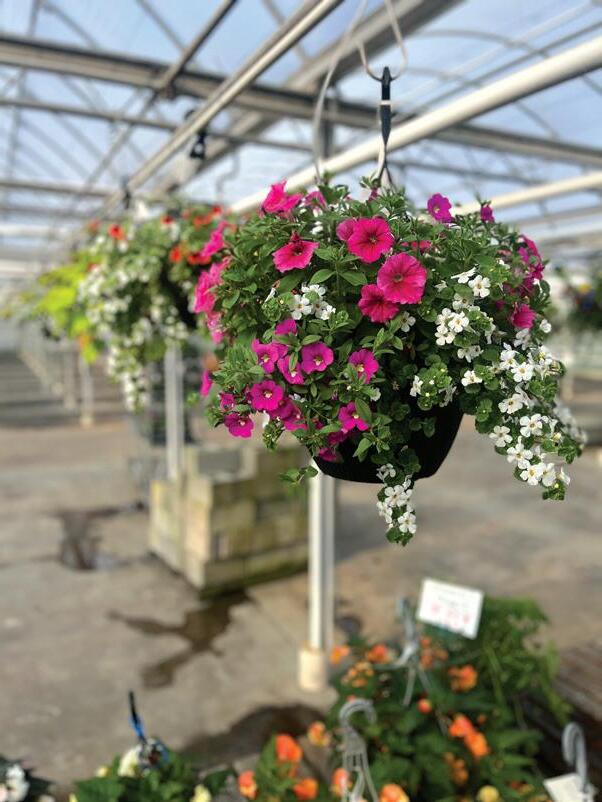



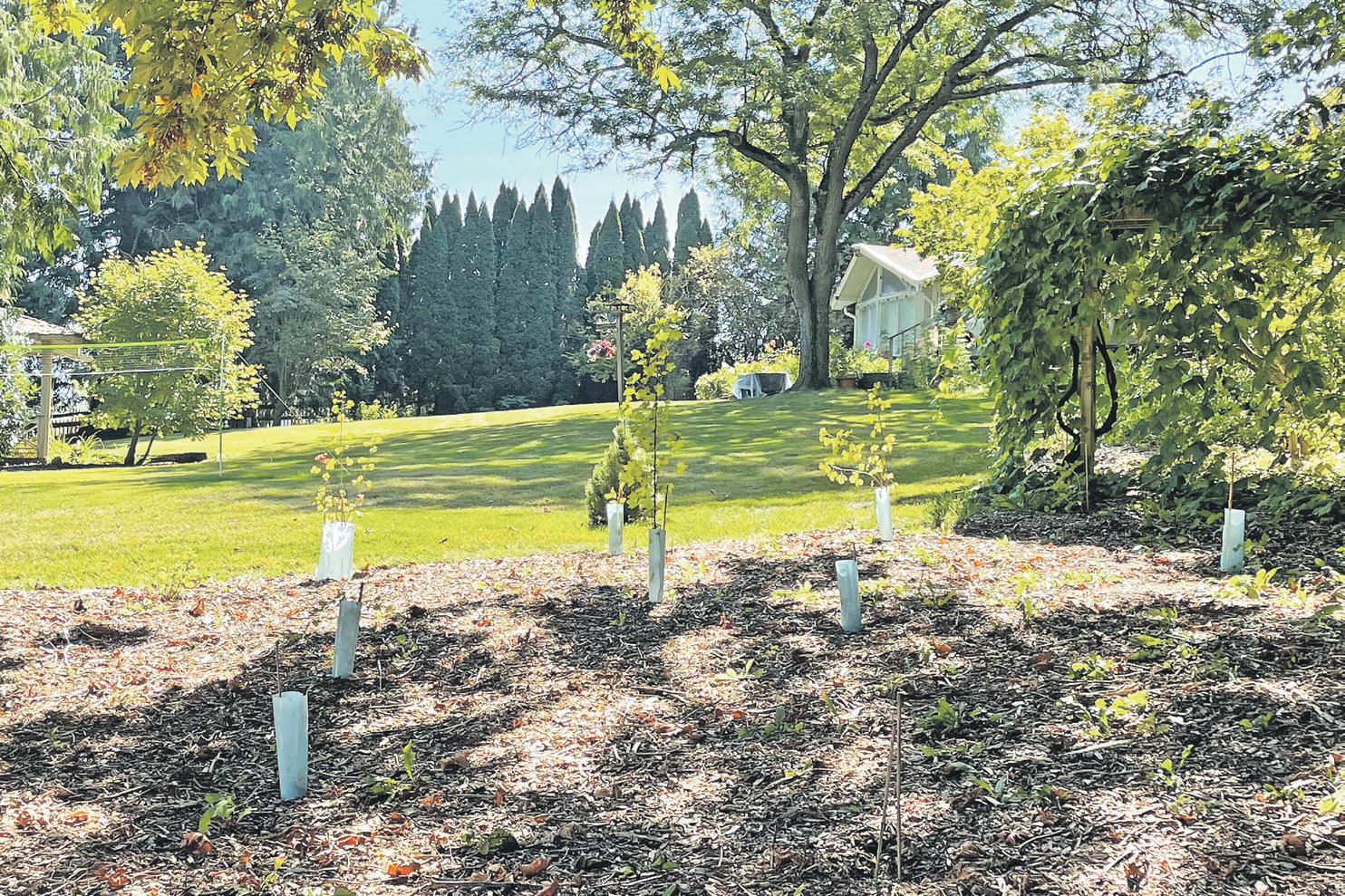
By Cheryl Lovato Niles For the Tribune
WHATCOM — Landscape gardening is a great pastime. For some, it’s a passion. So much so that the marketplace is filled with hundreds of gardening products and the internet is crowded with gardening advice. To make sense of it all can be a challenge and figuring out how to garden in an environmentally friendly way can feel overwhelming. I teach the Gardening Green course at Washington State University’s Whatcom County Extension, which provides evidencebased guidance on practical strategies for successful landscape gardening that also protect the environ-
ment. I had the pleasure of meeting Joe and Nancy Cowan when they took the Gardening Green course in March 2024. I followed up with Joe in September to learn how his sustainable landscaping efforts were going.
The Cowans are recent transplants from Massachusetts. Their new place in the county lies between Bellingham and Lynden and their lovely property includes a sweeping lawn bounded by a tall bamboo hedge, a grove of mature trees, a small fishpond, and a gazebo. Since it had been neglected for a while, it also came with an ample supply of deferred maintenance and invasive weeds: Himalayan blackberry, yellow archangel, holly trees,
a shed-eating wisteria and some hazard trees all demanded prompt attention.
Joe told me that he has moved around the country and that when he comes to a new area he likes to connect with the local university extension office to gain insights into the local plant life and to get locally relevant gardening guidance as soon as possible. That’s where he learned about WSU Extension’s Gardening Green course. He said he was immediately drawn to the course since it offered him a way to get that local gardening guidance, and it aligned with his desire to create an oasis for both people and wildlife.
While gardening is more Joe’s passion than Nancy’s, he appreciated that she





info@dejongheating.com




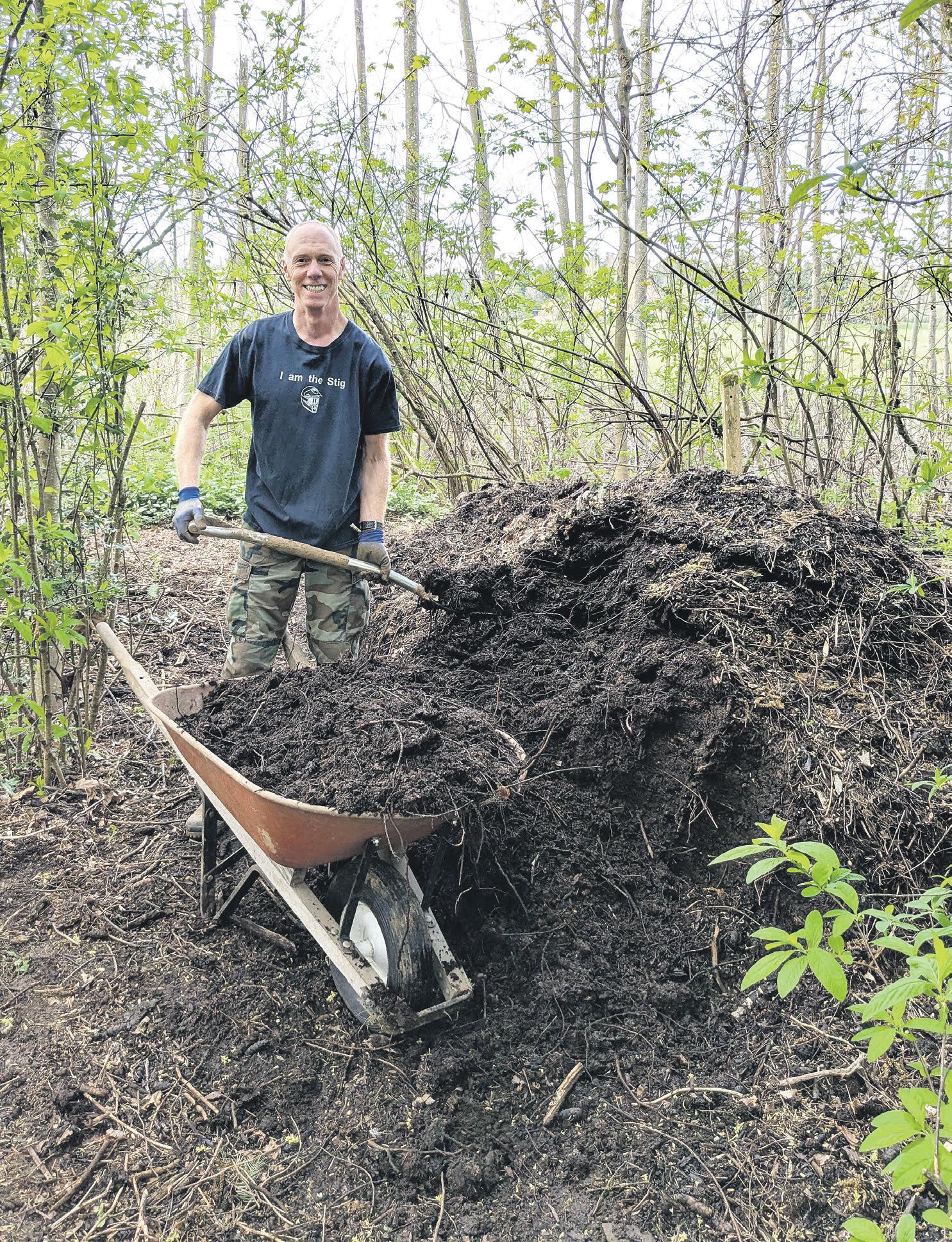
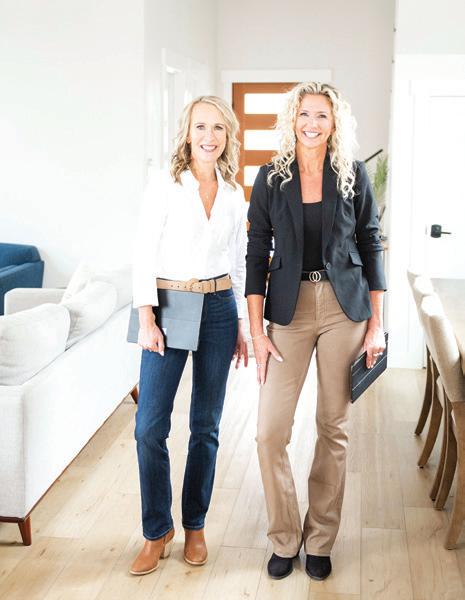


could also take the course for no additional charge.
Joe jumped into both the course and the landscape renovation with energy and enthusiasm. Before the course began, he removed the hazard trees, as well as the thickets of Himalayan blackberry, and radically renovated the wisteria to reveal the shed below.
Joe appreciated doing the sun study course exercise as it gave him insight into how removing those hazard trees changed the sun exposure in that area – shifting some spots from shady to full sun – and showed how radically different the sun exposure is during the growing season compared to the winter.
Because he wants their yard to be a haven for wildlife, Joe said he plans to incorporate a lot of native plants into the landscaping. But he doesn’t want to garden exclusively with natives. As we toured their property, he noted that the stems from his bamboo hedge make excellent garden supports as well as markers for newly installed plants. And the dahlia garden he started with tubers from a friend is full of color in September.
Joe reports that one of his main takeaways from the course was the importance of soil health and he is delighted that this soil is the best he’s ever had to work with. He appreciated the opportunity to get a professional soil test through the course. The soil report gave him guidance on improving the pH by adding the right type and correct amount of lime.
Joe has repeated the recommended DIY soil drainage test in numerous spots around the yard and has found that even when the water doesn’t immediately sluice down a mole tunnel, the drainage is excellent. He’s also looking forward to improving the soil further by adding more organic matter. Luckily, a handy source of organic material will be available soon - he’s embraced composting on a grand scale as a
way to deal with the volume of yard waste that his renovation efforts have generated. He’s also removed yards, and yards of landscape fabric to improve soil health as well. Though it was initially put in place with the intention of blocking the weeds, over the years weed seeds landed on top of the fabric, germinated, and grew their roots down into it, and then became even more difficult to remove.
Meanwhile, the fabric makes it hard for roots to breathe, and it keeps organic matter from leaves and/or mulch from naturally replenishing the soil.
During their first spring and summer on the property, Joe put in dozens of new plants. So many that keeping everything watered over the dry season became a big challenge. He said that for future plantings he plans to follow the principle of hydrozoning - the practice of grouping plants according to their watering needs as recommended in the Gardening Green course - to conserve water and also save time.
I asked Joe what he finds most difficult. He said the moles pose a challenge, as do the deer who keep eating his vine maple. He also knows the blackberries will have to
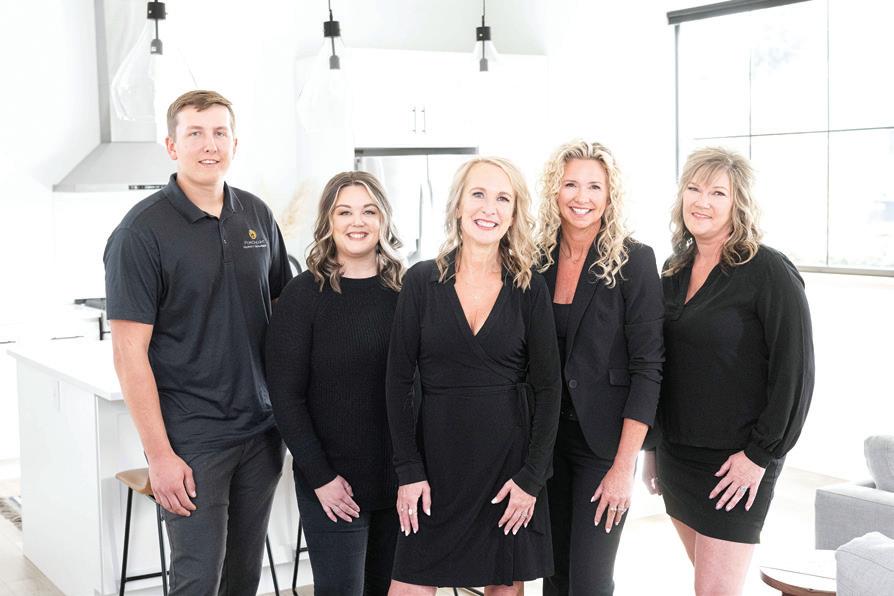
be pushed back every year for many years before he can relax into a merely vigilant state.
We stopped to gaze at their lovely little pond for a moment. Joe has enjoyed learning how to manage it. In the spring it was home to many tadpoles. Two goldfish cruise about now. I asked him where he spends most of his time in the yard and he confessed that he spends most of his time working rather than relaxing at this point, but he enjoys entertaining friends there when he can, including some that he and Nancy made while taking the Gardening

Green course.
As we wrapped up our visit, I asked Joe what advice he would give to other gardeners. He said he would definitely recommend taking the Gardening Green course because of all of the excellent resources that can assist you with your immediate landscaping goals, help you avoid common gardening missteps, and also support additional research and future problem solving.
He also highlighted a few of those resources. To identify weeds, he likes to visit the Master Gardeners’ Weed Identification Garden in Hovander Park. To identify unfamiliar plants, weed or otherwise, he likes to use the app called PlantNet.
For inspiration, Joe has enjoyed visiting the demonstration gardens which are also in Hovander Park as well as the Discovery Garden in Mount Vernon. Joe is also looking forward to visiting them again this winter for more ideas on keeping the landscape interesting all year.
-- Cheryl Lovato Niles is a water resources educator with Washington State University’s Whatcom County Extension

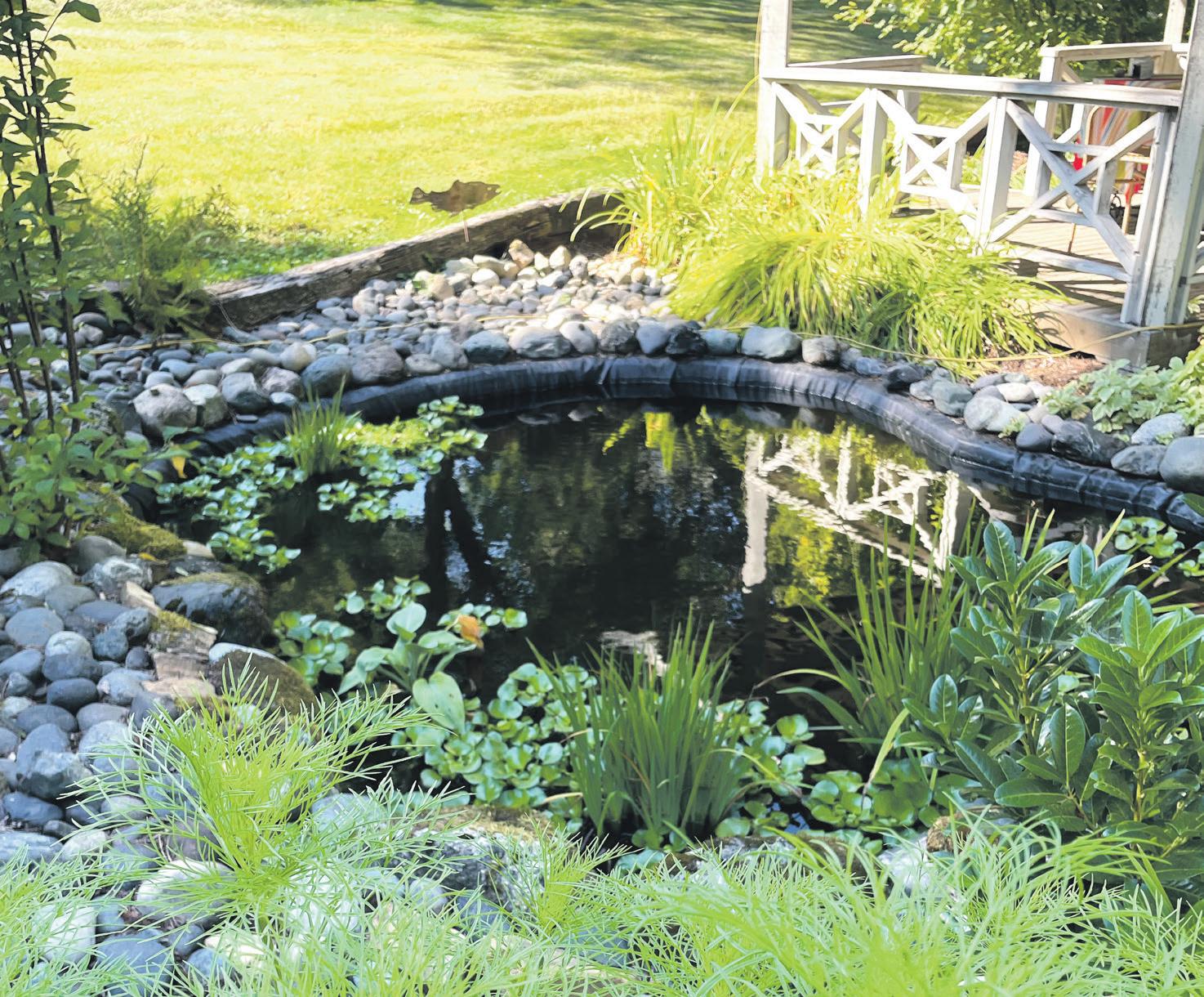
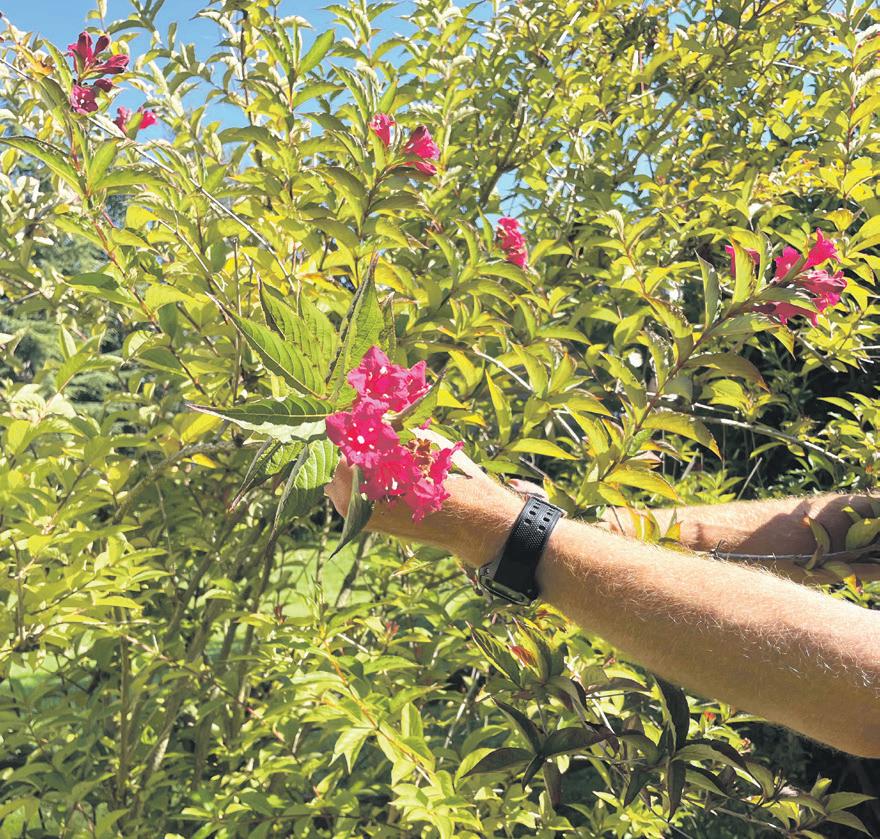
This pond, above, was home to many tadpoles in the spring. At left, Joe and Nancy Cowan's wildflower garden. For inspiration, Joe has enjoyed visiting the demonstration gardens which are also in Hovander Park as well as the Discovery Garden in Mount Vernon. Joe is also looking forward to visiting them again this winter for more ideas on keeping the landscape interesting all year. (Courtesy photo)


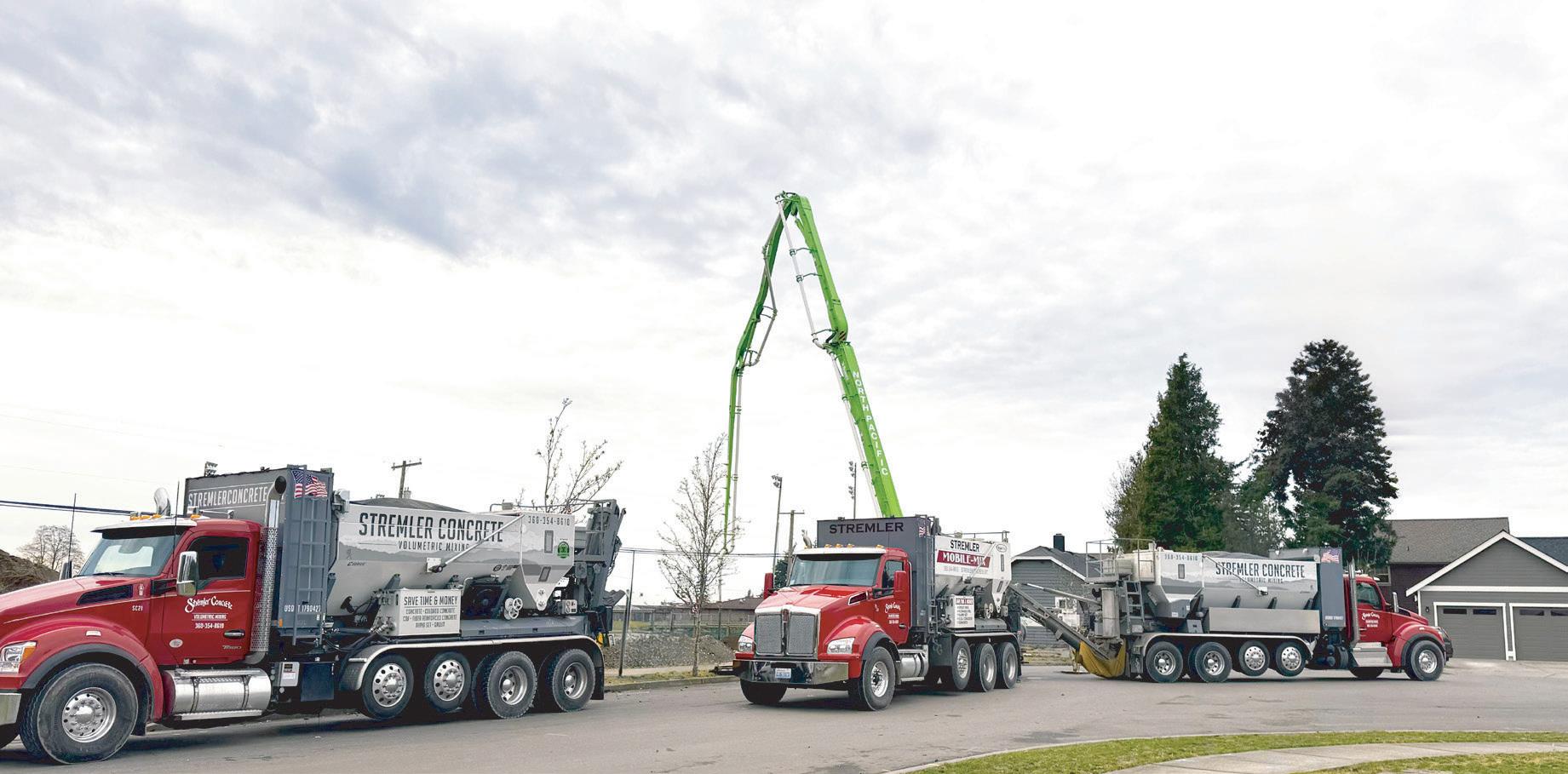

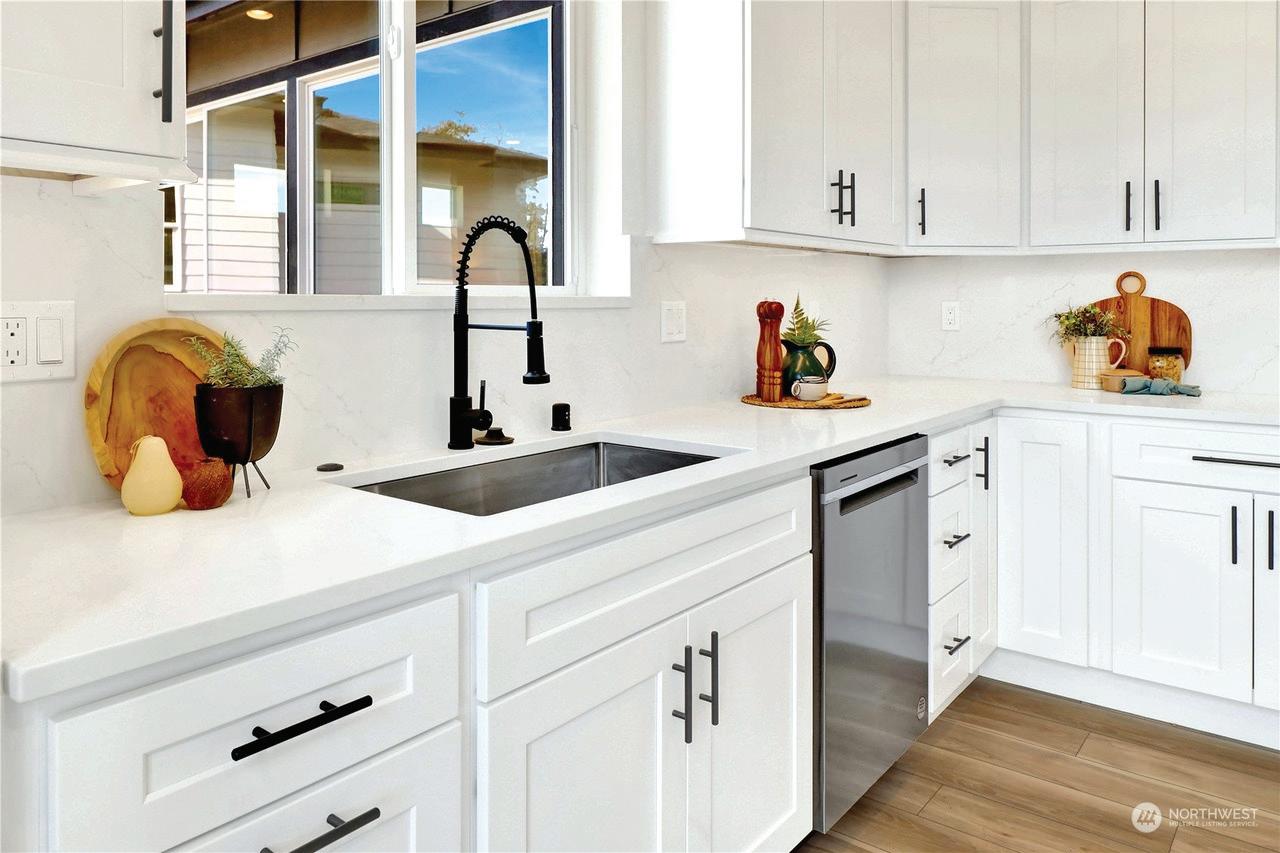


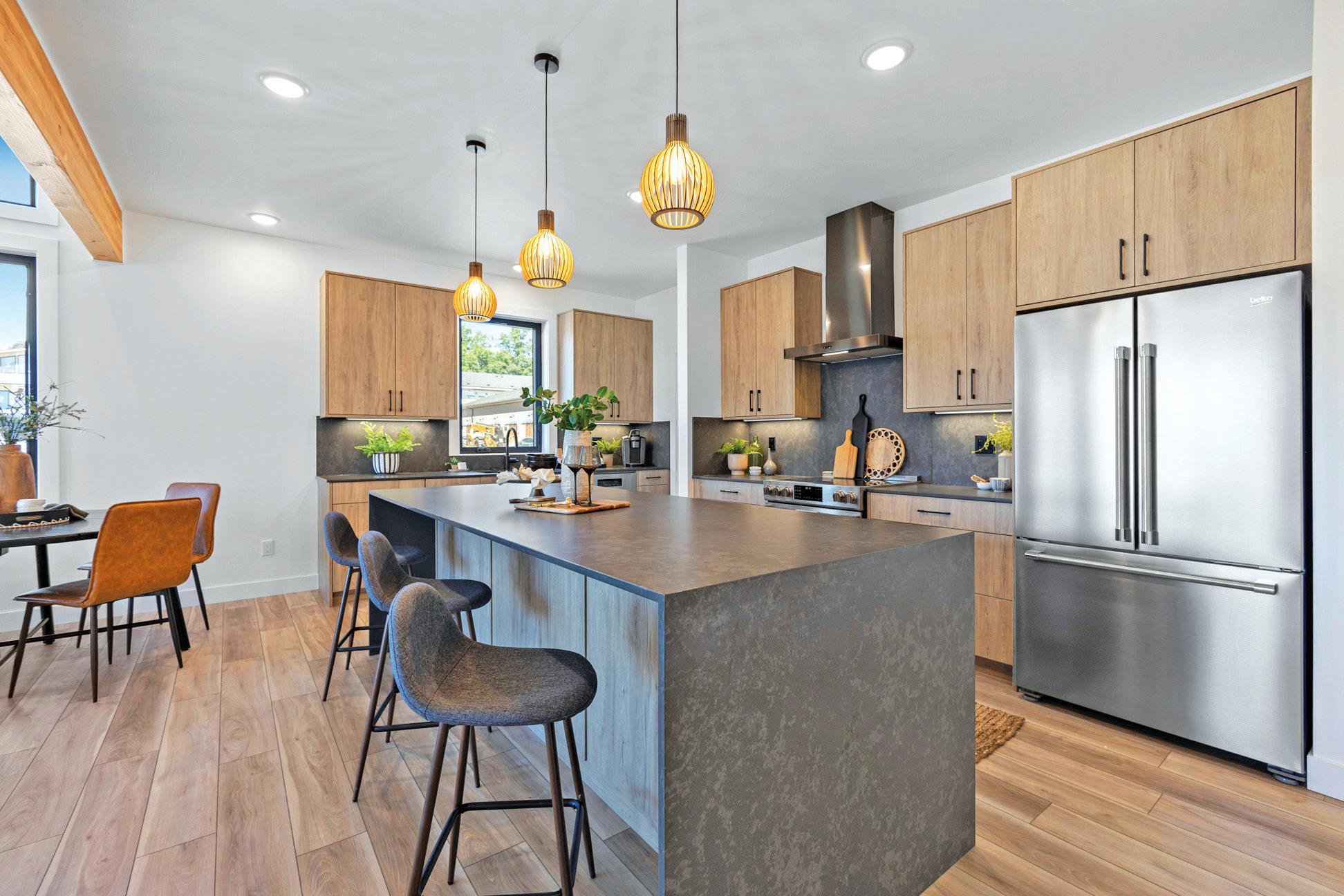


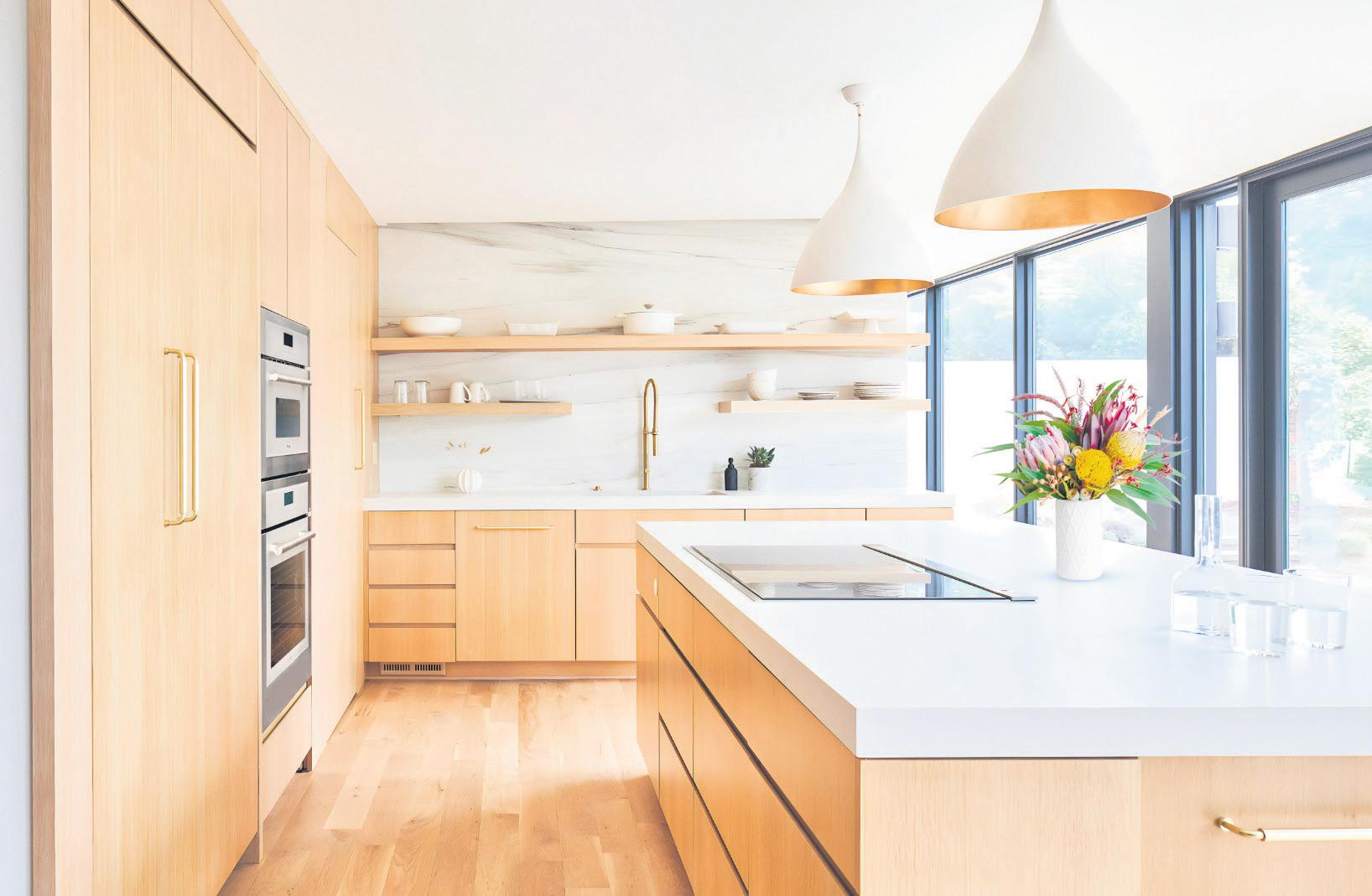



A spectrum of personalization options in just the beginning of the Leap Into Luxury appliance packages. Each suite takes cues from legendary Thermador design principles while infusing flexible installation on options, fresh finishes, and of course, leading-edge innovation. Discover a new model of luxury. LEAP INTO LUXURY WITH APPLIANCE PACKAGES STARTING JUST UNDER $ 10K